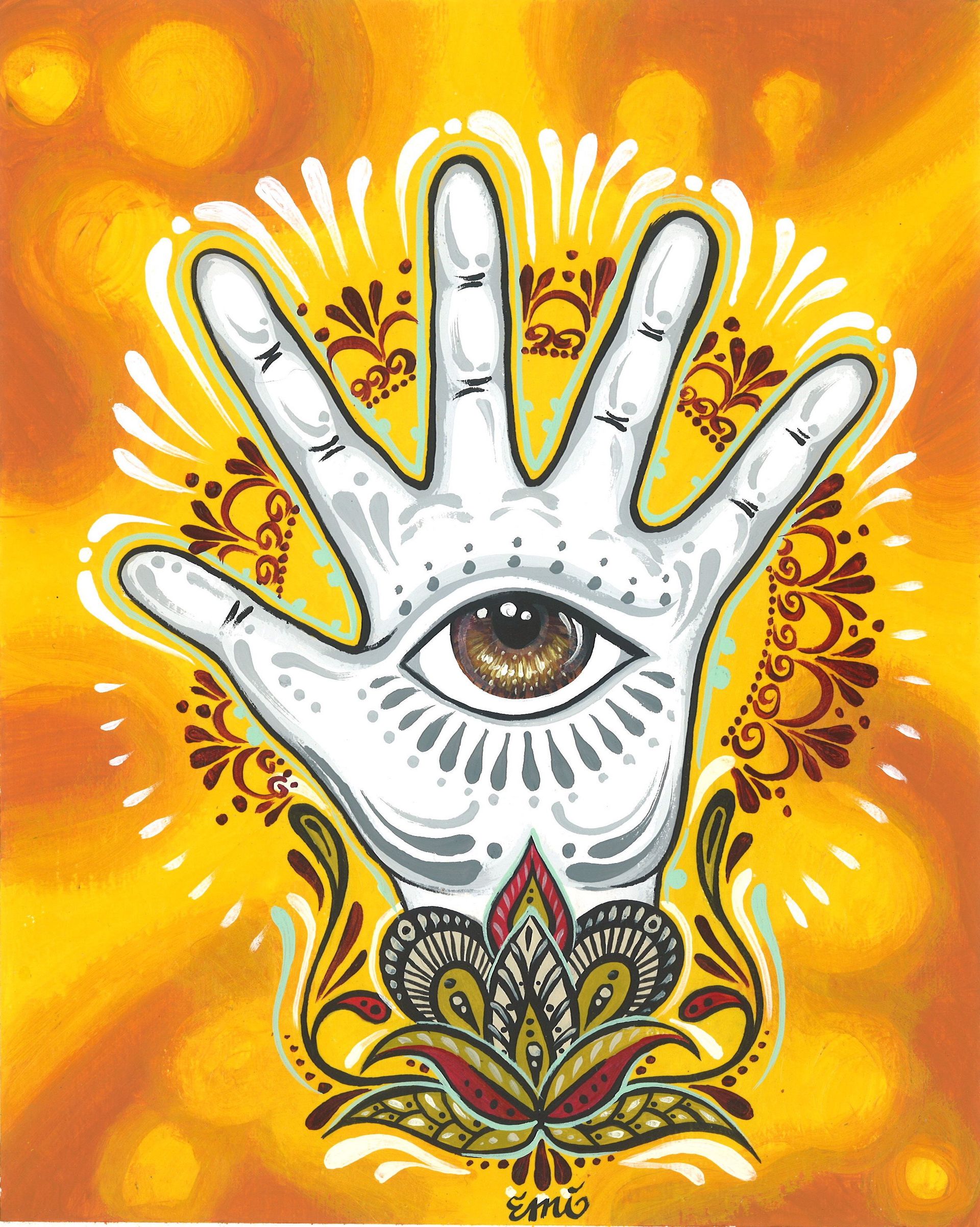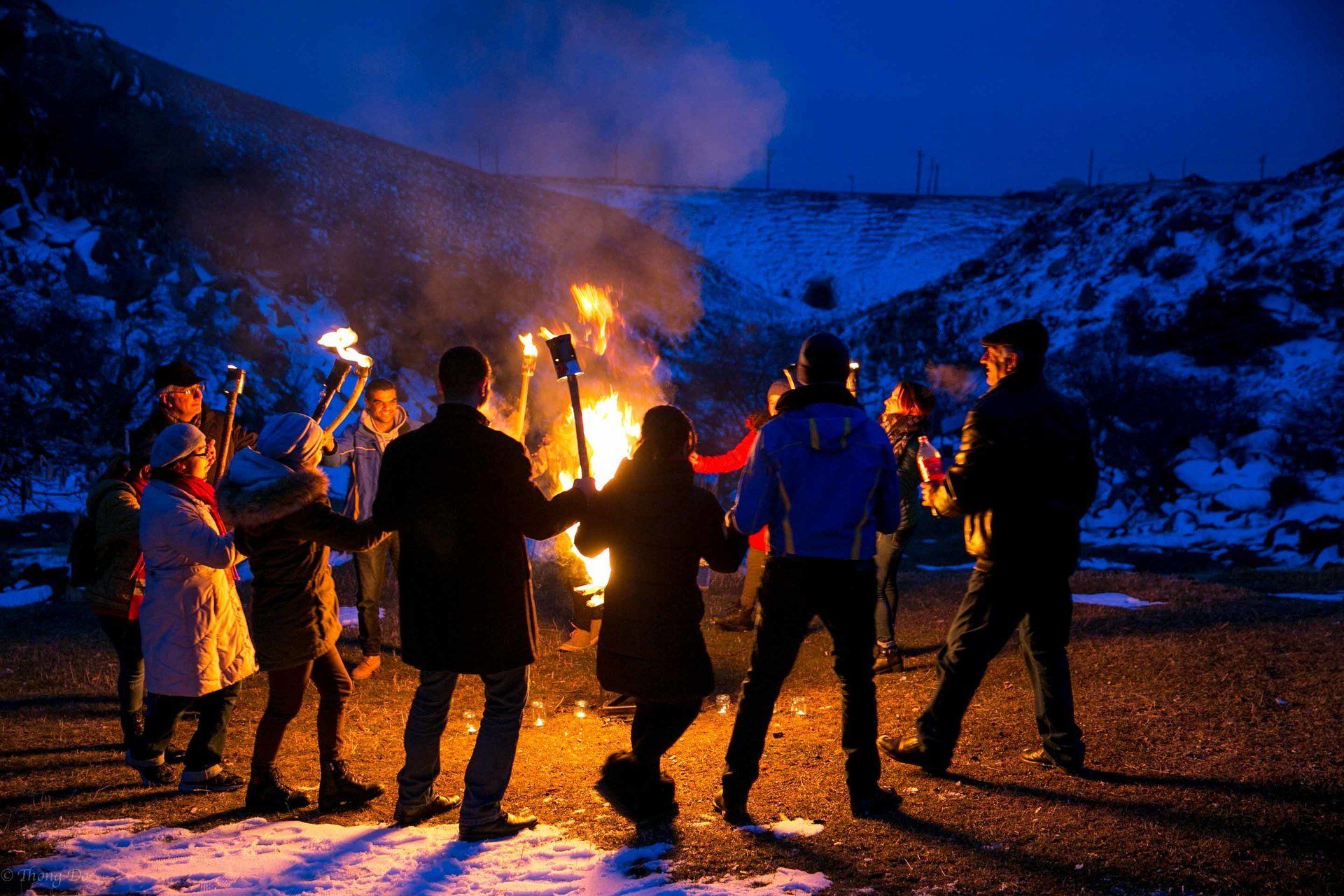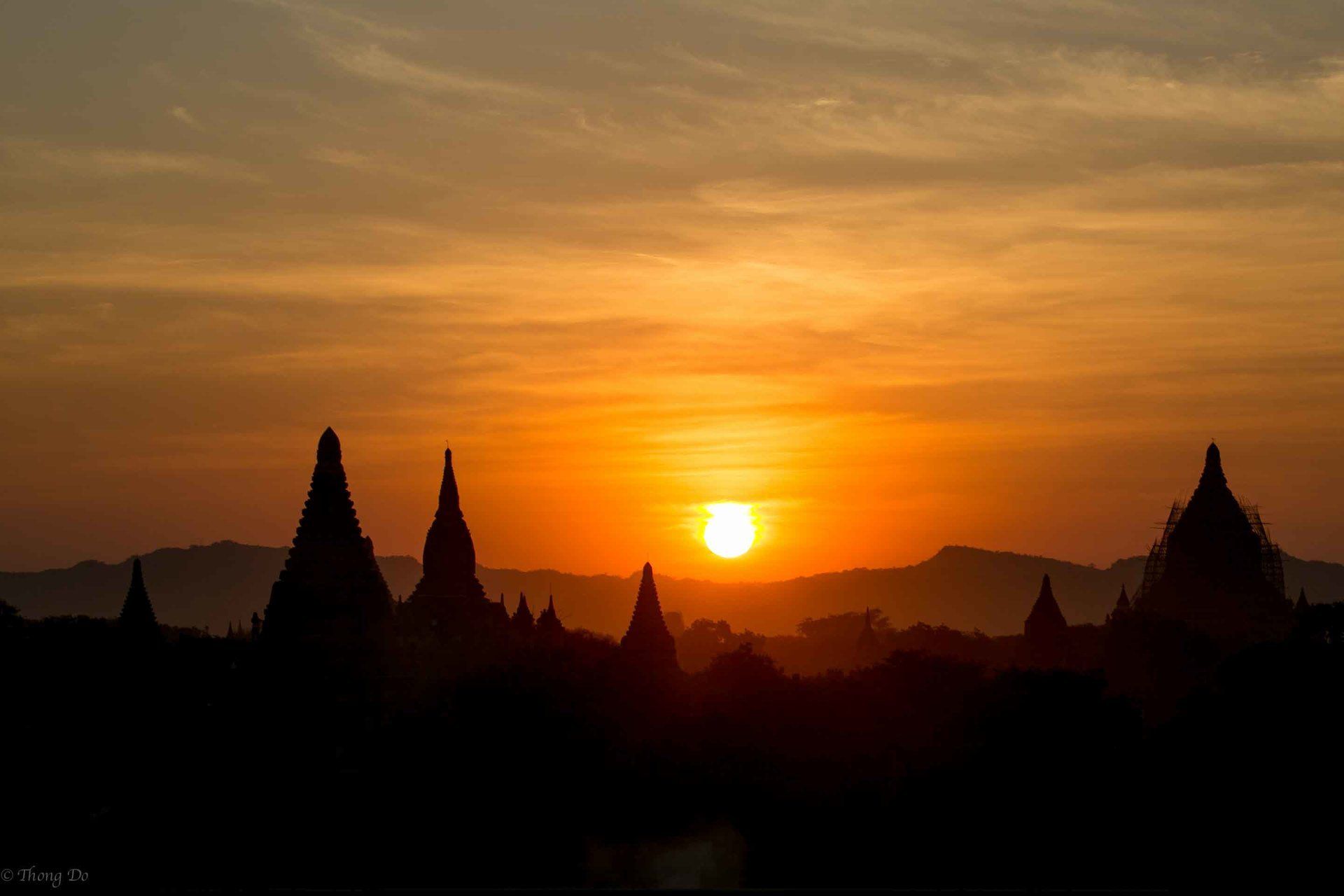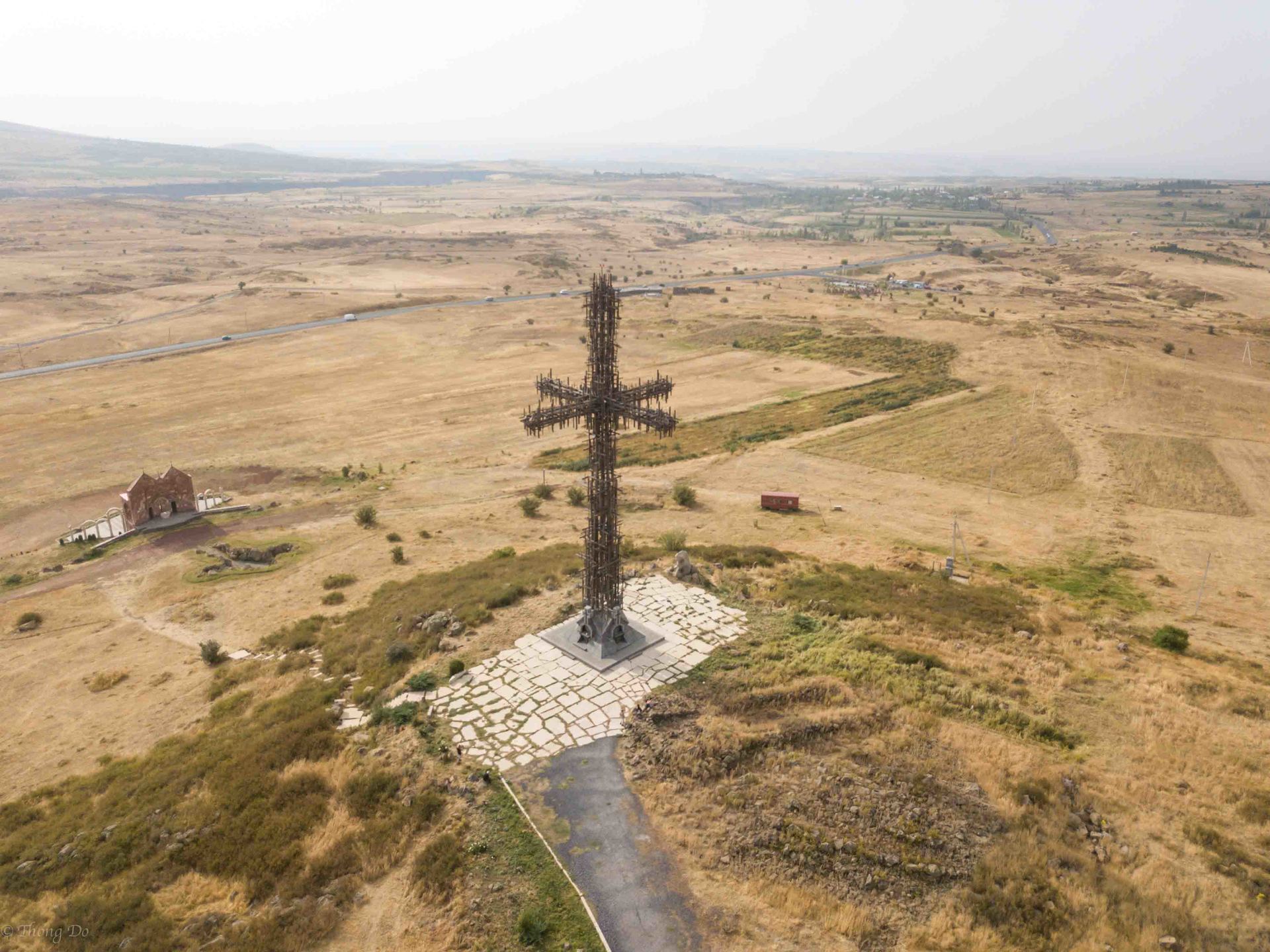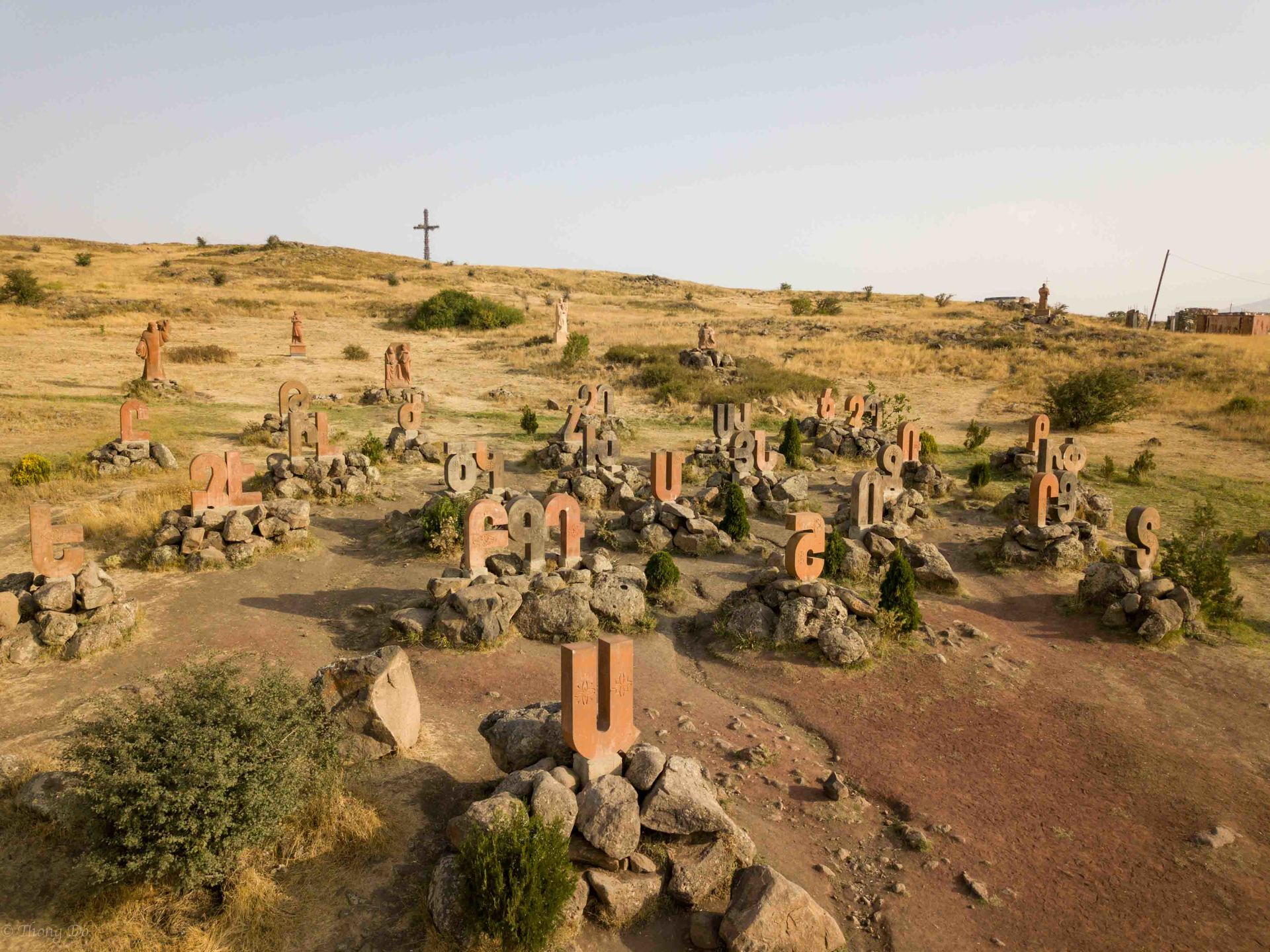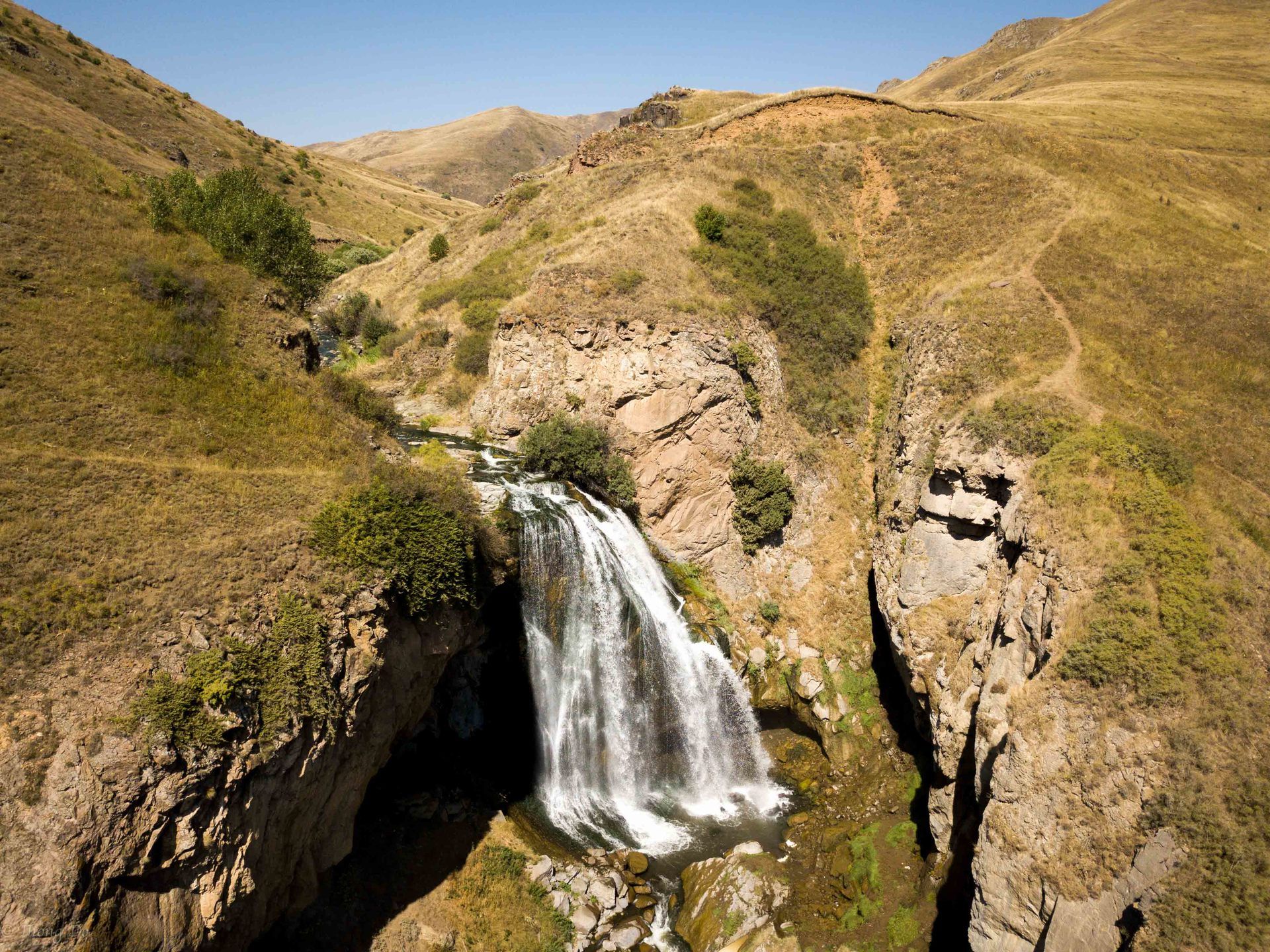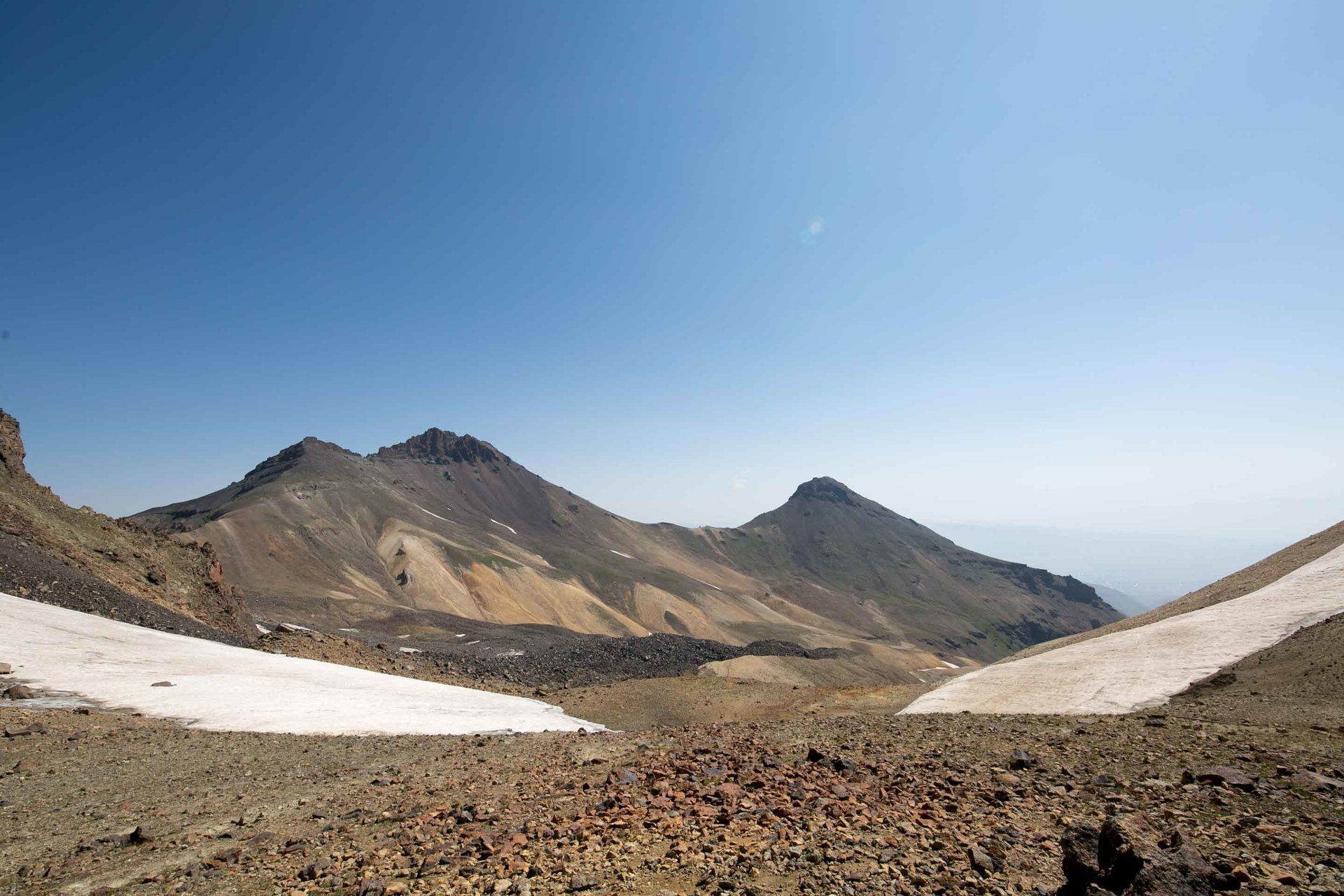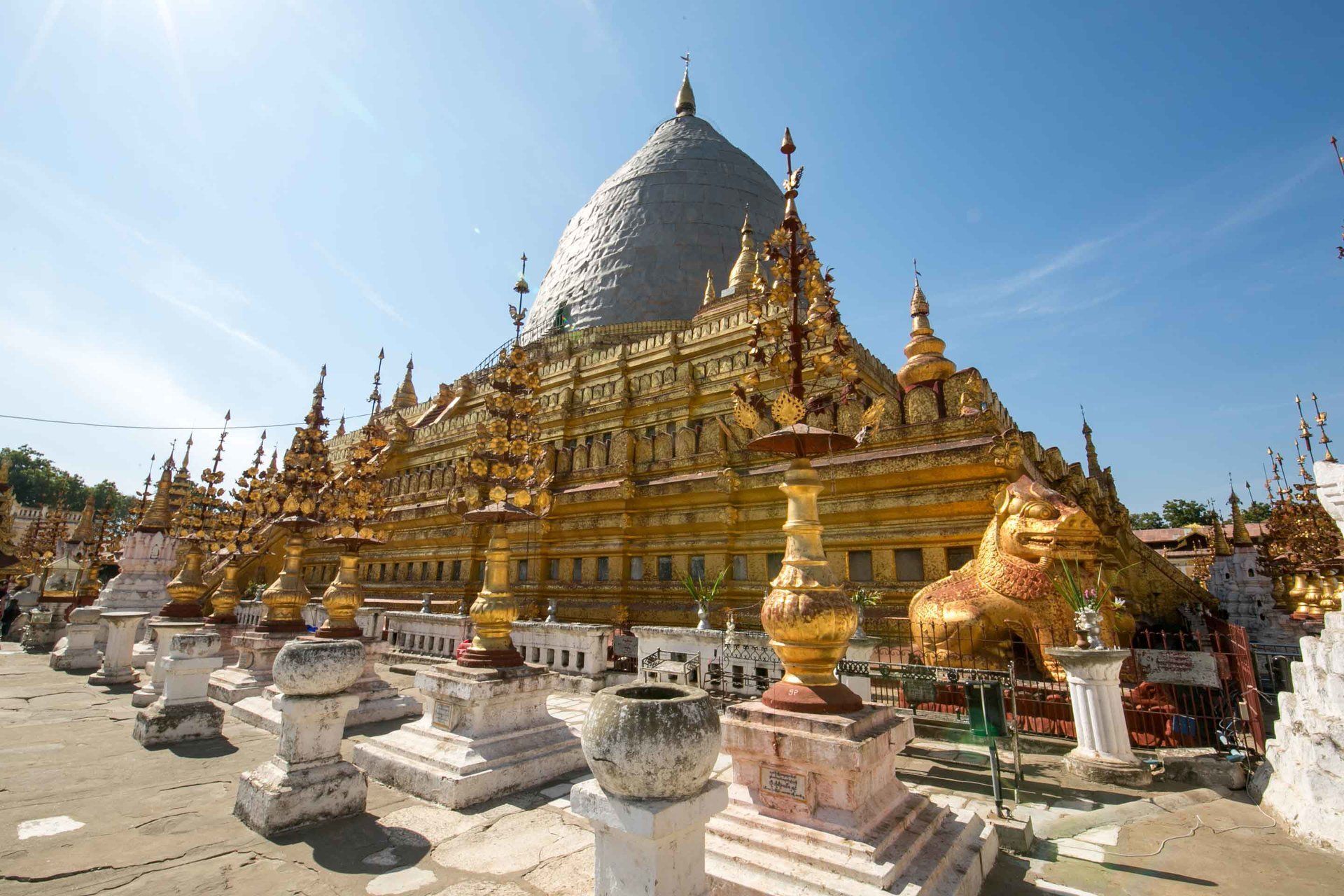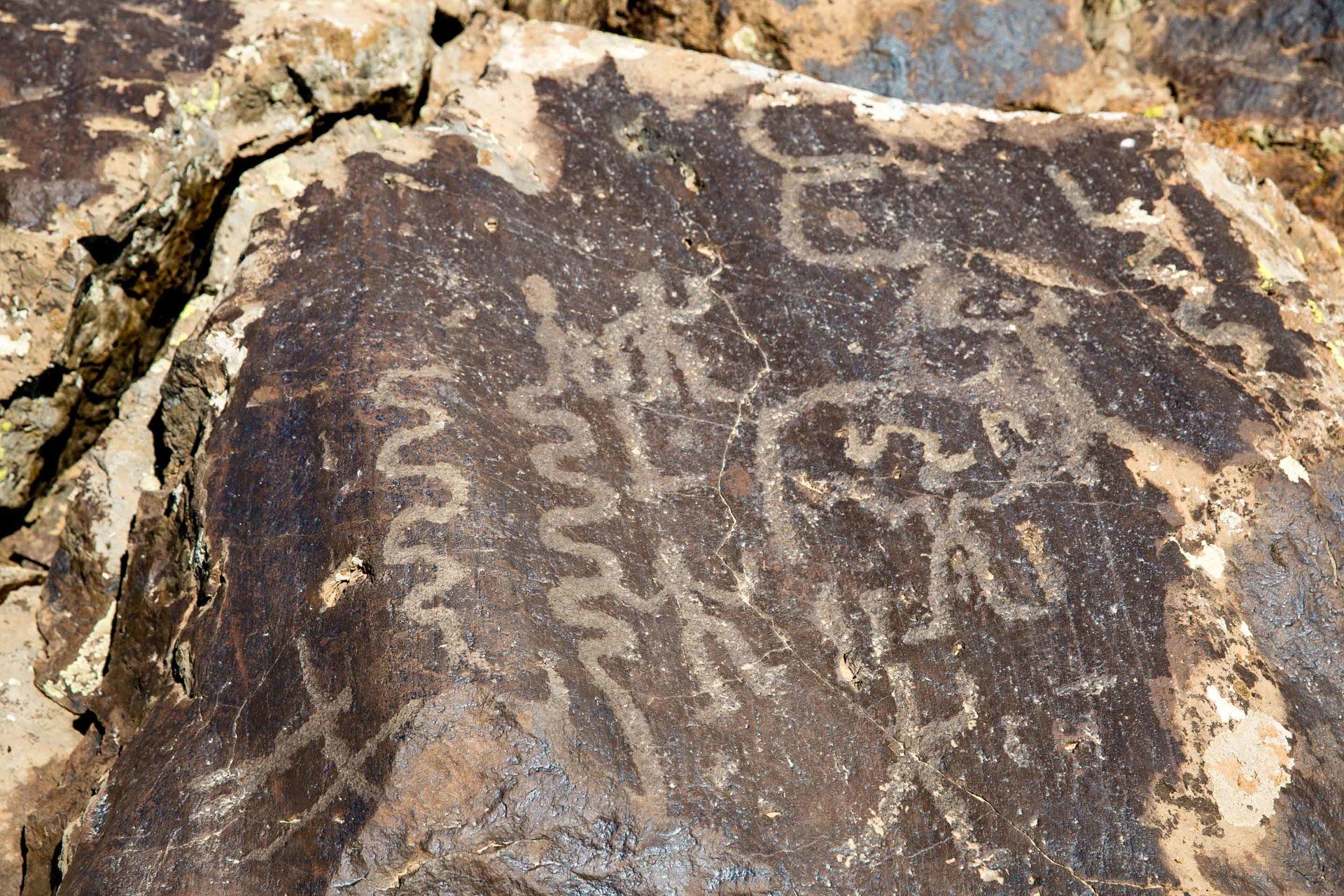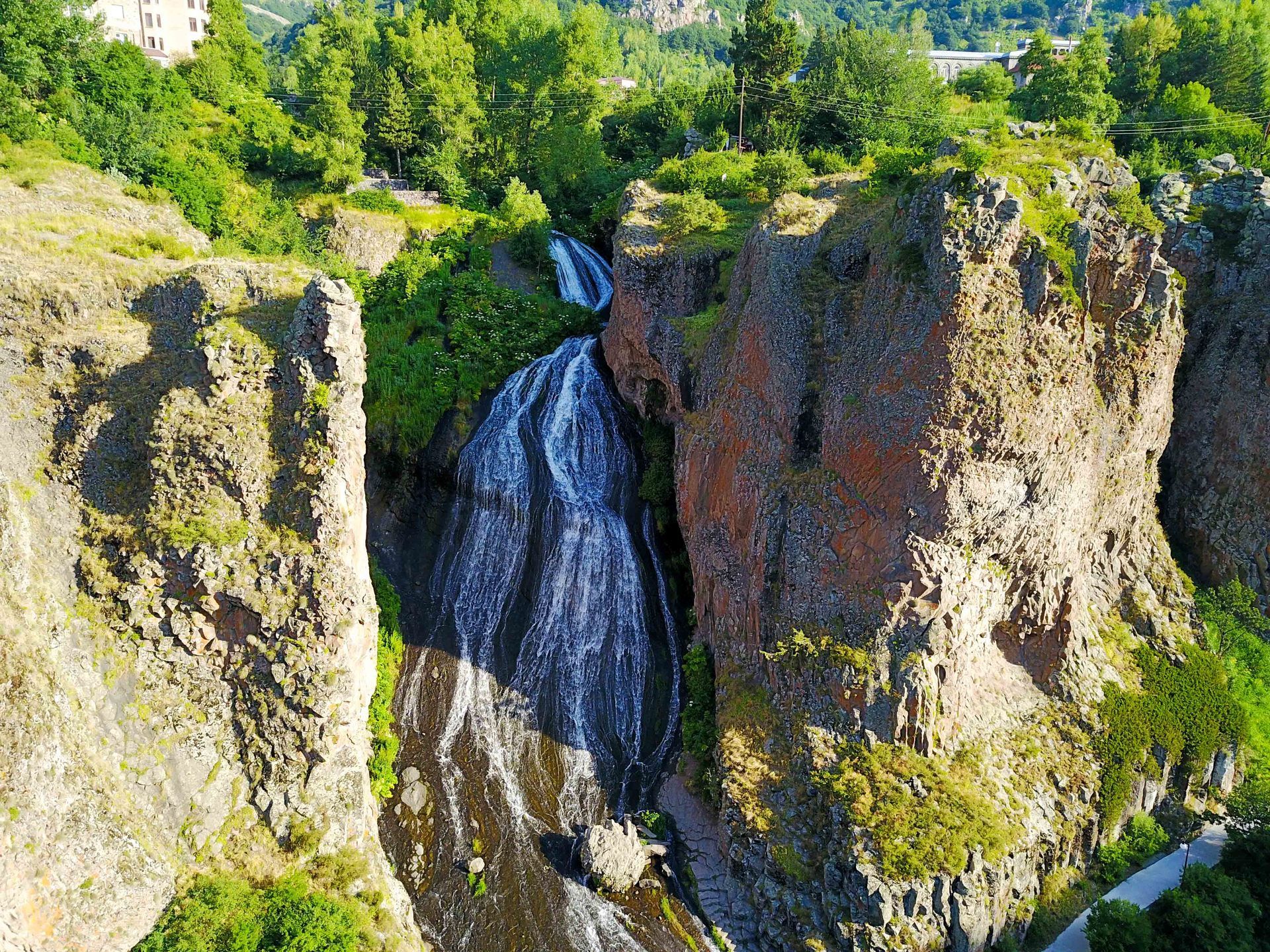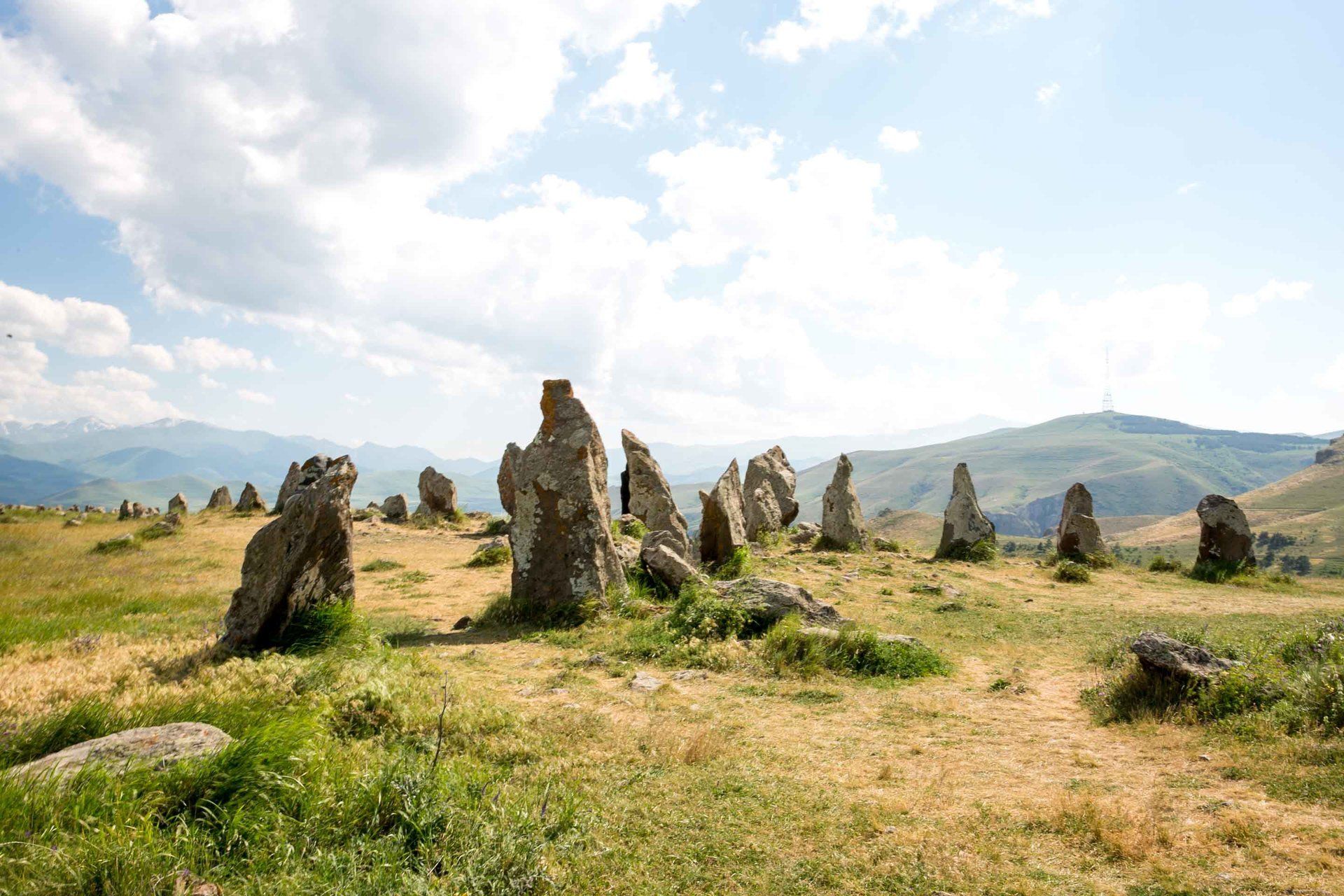What to see in Yangon, Myanmar: Part 2 The Sule Pagoda, The Reclining Buddha, The Hsin Hpyu Daw White Elephant Park, The Kandawgyi Park, The Kaba Aye Pagoda and Maha Pasana Cave
- By Thong Do
- •
- 07 Mar, 2017
- •
After seeing the Shwedagon Pagoda there are still other gems to see around Yangon. One of the other famous must see landmarks include the Sule Pagoda located in the Colonial Quarter near the Hlaing River. It’s hard to miss since it is a permanent fixture on the downtown skyline. The Sule Pagoda is believed to be constructed around 230 B.C.E. and once had the hair of Buddha himself enshrined in the central stupa. The stupa or zedi currently stands at 44 meters high (144 ft.) and it differs from other designs in that its octagonal layers are usually curved and smooth.
The pagoda got its name from the guardian spirit that resided in that spot. The spirit’s name was Sulerata, who is said to have guided the monks to the nearby Singuttara Hill, the site of the Shwedagon Pagoda. Nats (spirits) have been worshipped for centuries in Myanmar even before the introduction of Buddhism.
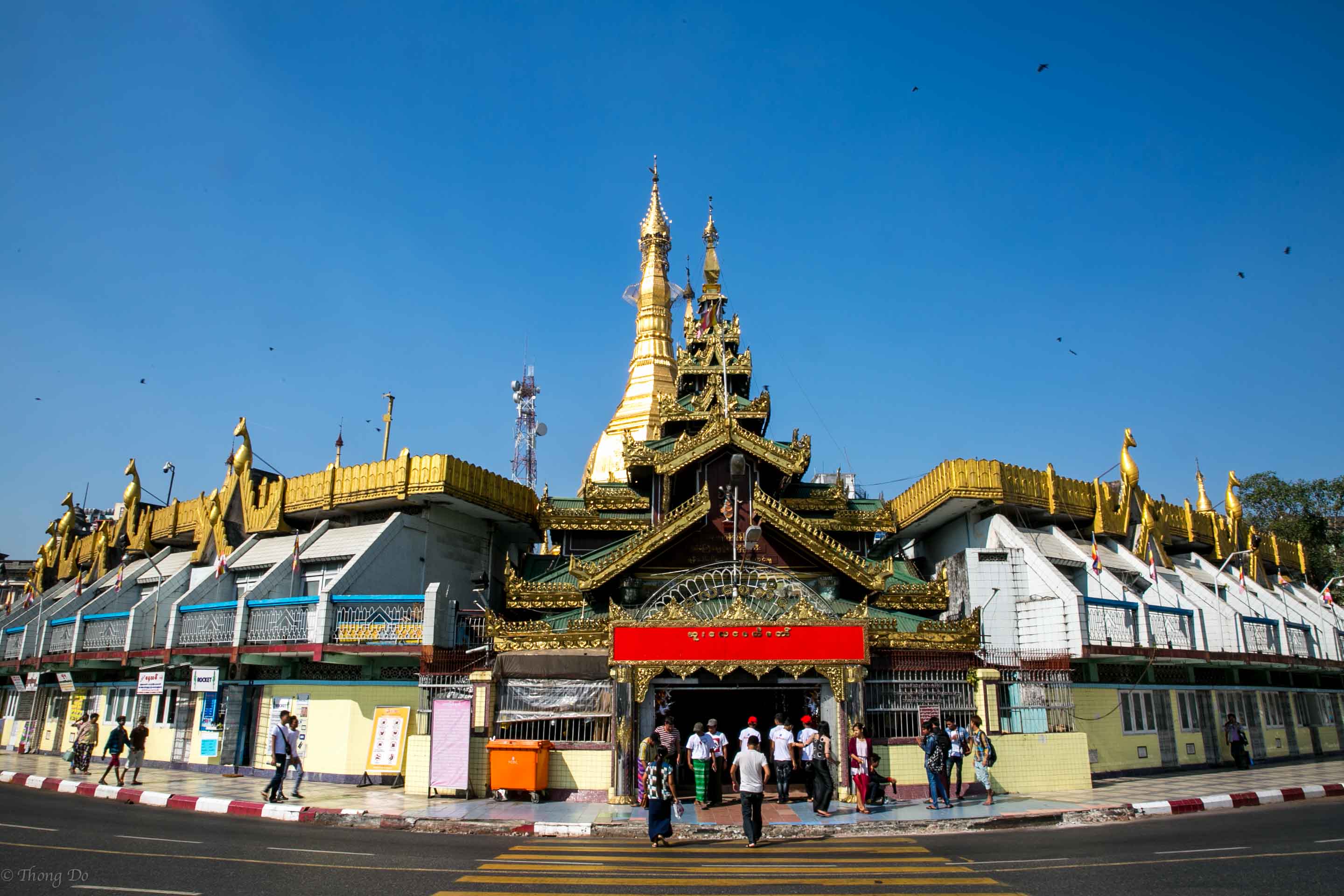
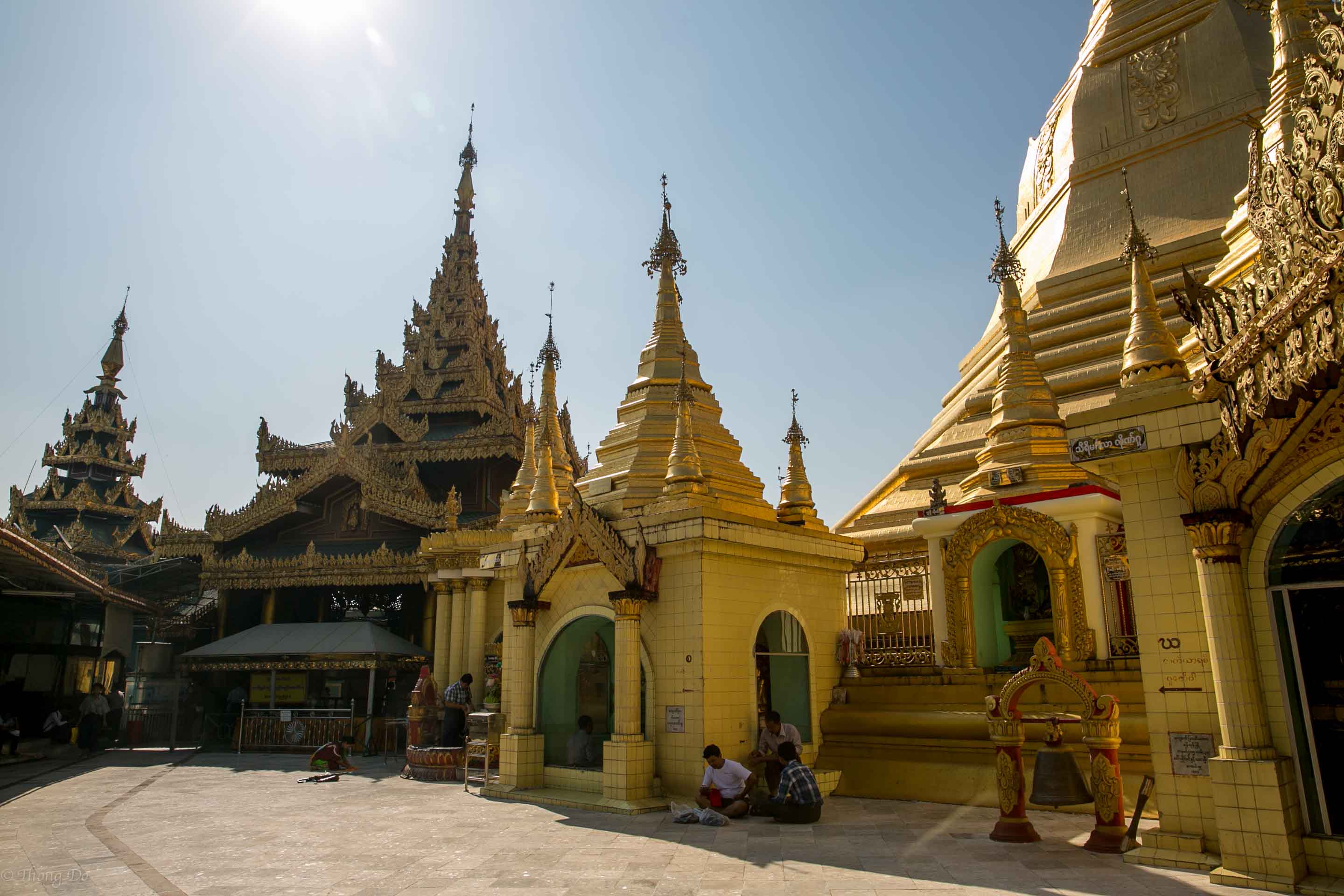
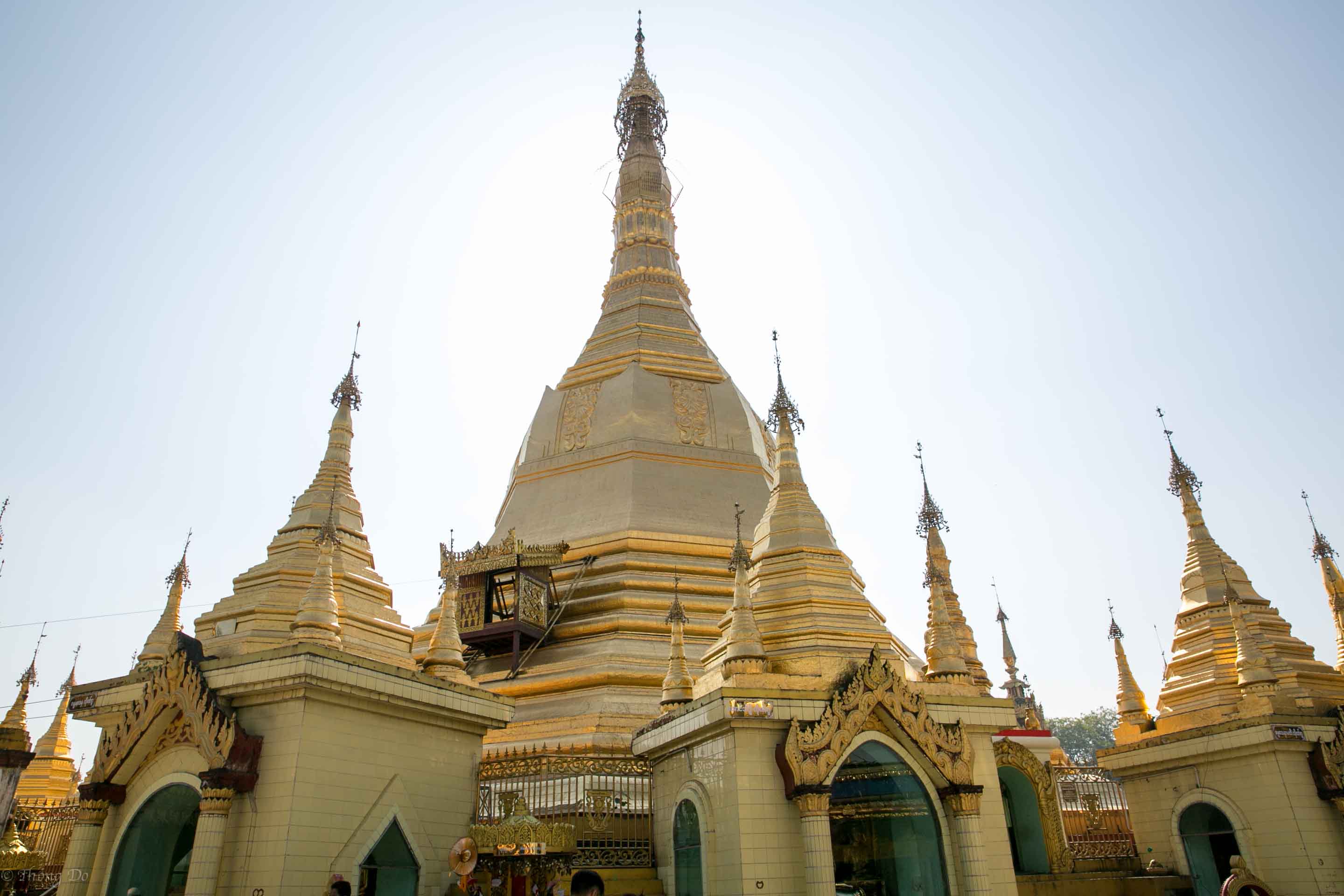
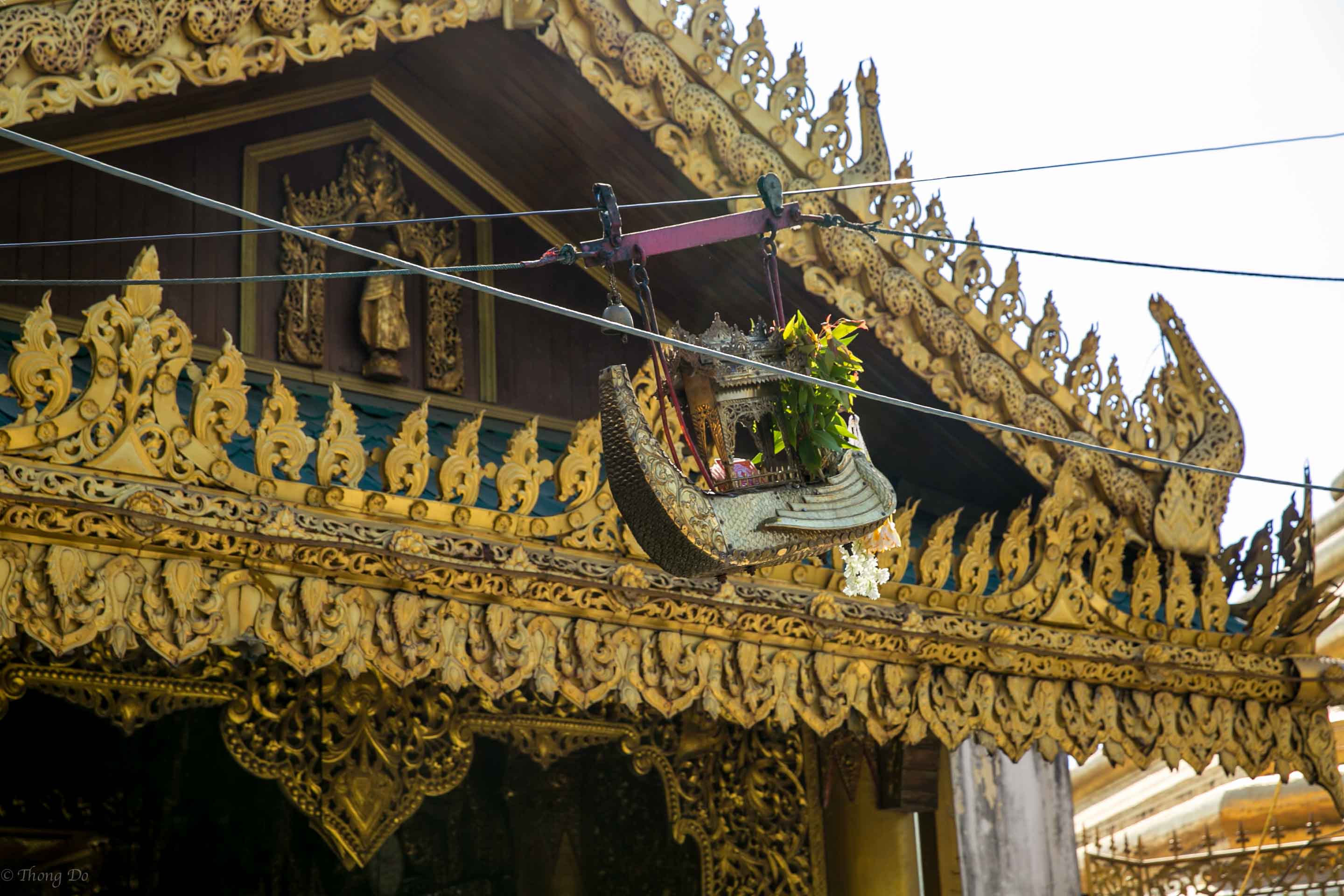
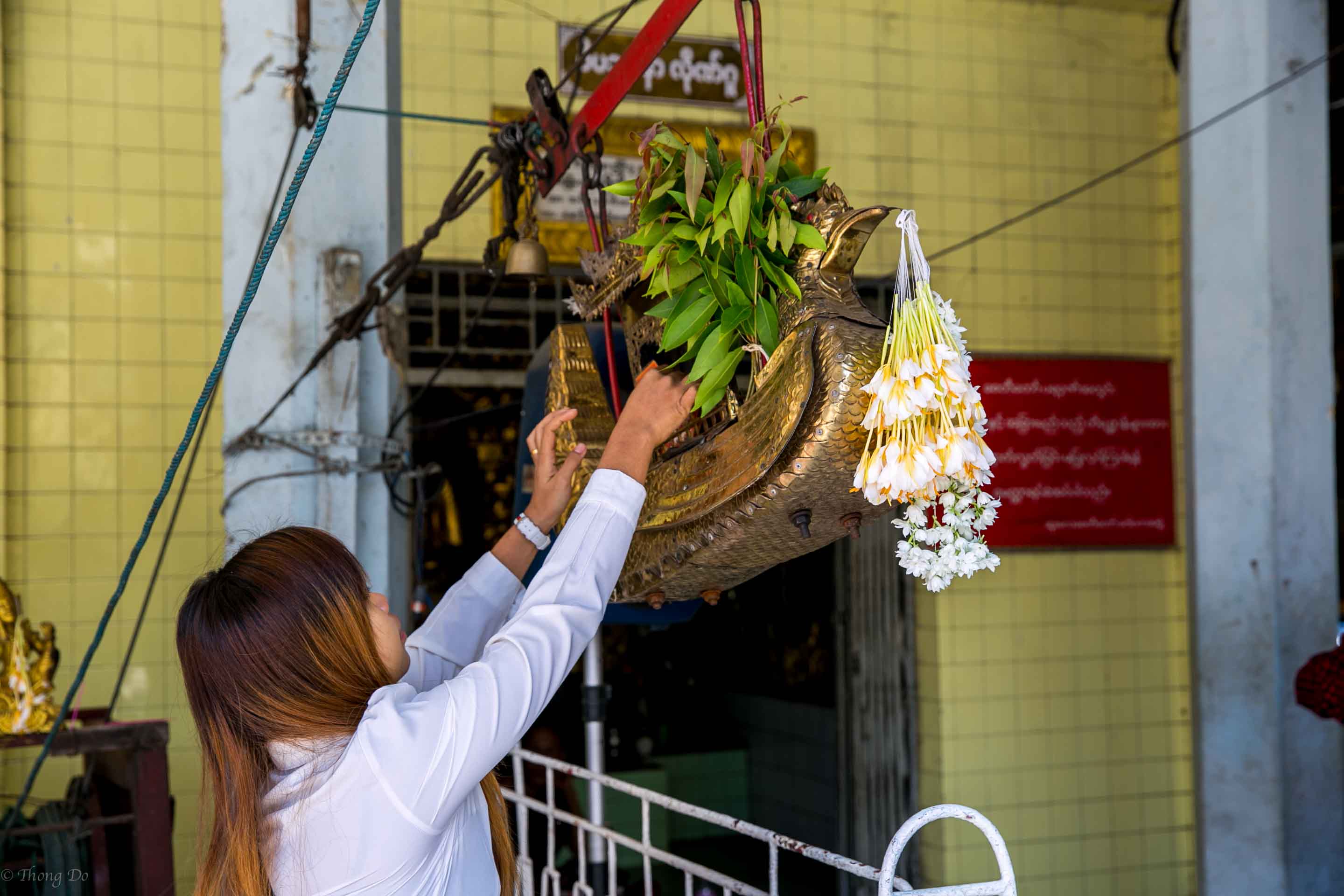
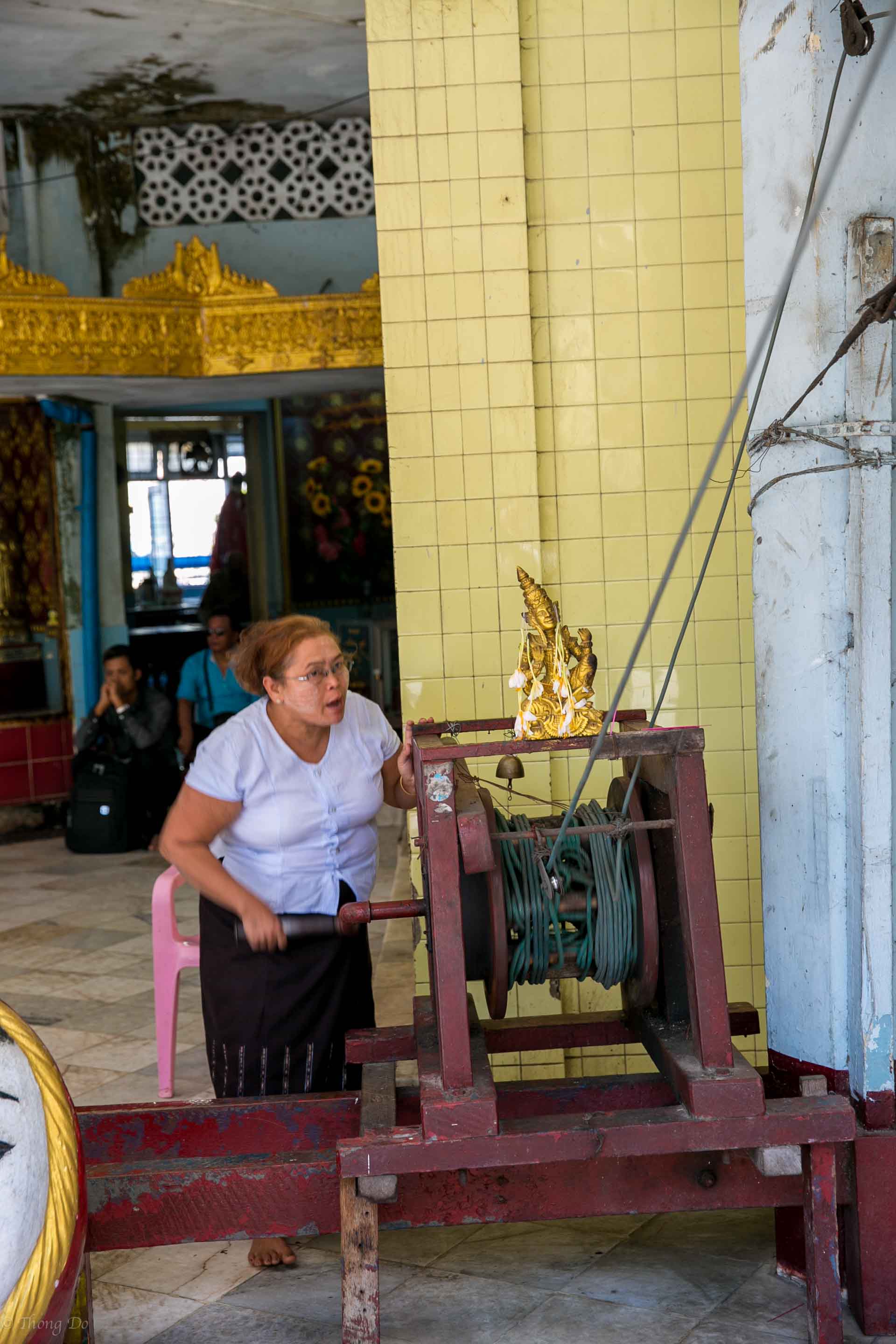
The entrance fee is $5 and opens from 6am-10pm. Dress appropriately when entering. Shoes must be taken off. The best piece of advice is to where sandals when visiting the major religious sites in Myanmar. The time it takes to remove your socks and shoes is just a hassle so save time by wearing sandals. They are incredibly cheap to buy at nearby markets. There are plenty of vendors inside to sell fruit and flowers to leave an offering. One of the more interesting things I noticed inside was the chance to buy some gold leafs and have it placed on the stupa. A small wire cable system is installed to place your gold leaf in a small carrier and can then be taken to the top. A lady was in charge of it when I first noticed worshippers placing their offerings on it. Once it reaches the top another person will put the gold leaf on the stupa.
The next place worth seeing is the Kyauk Htat Gyi Pagoda and its known for its 65 meter long Reclining Buddha. Located just north of Kandawagyi Lake along Shwedgondaing Road this site is next to Buddhist monastery housing nearly 500 monks and a renowned Vipassana meditation center. Constructed in 1907 and made of wood according to the original pictures I witnessed there, it went under massive renovation in the late 1960s paid by a local entrepreneur, local Buddhists, and tourists. Originally exposed to the elements it now reclines in a vast hangar to keep it pristine.
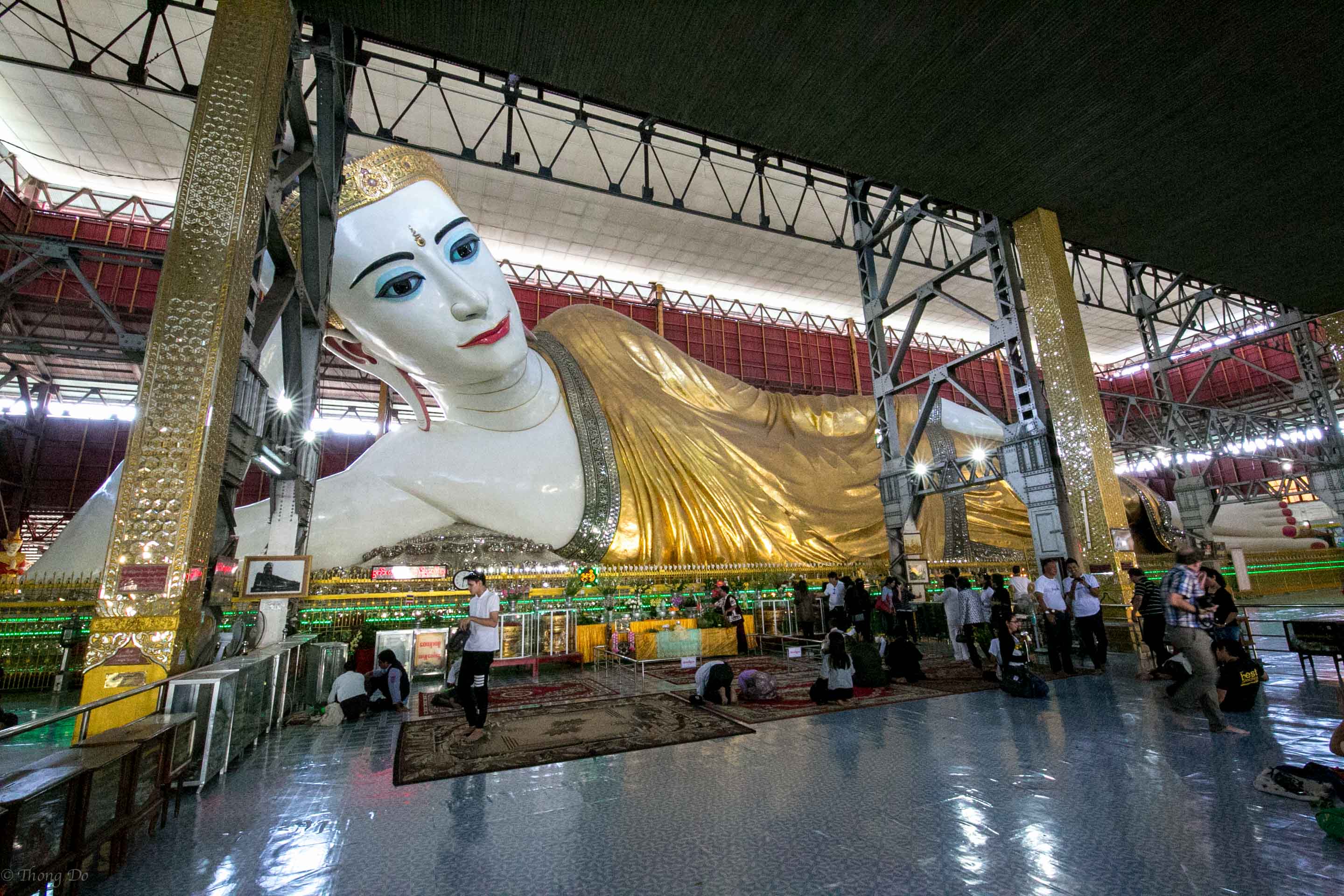
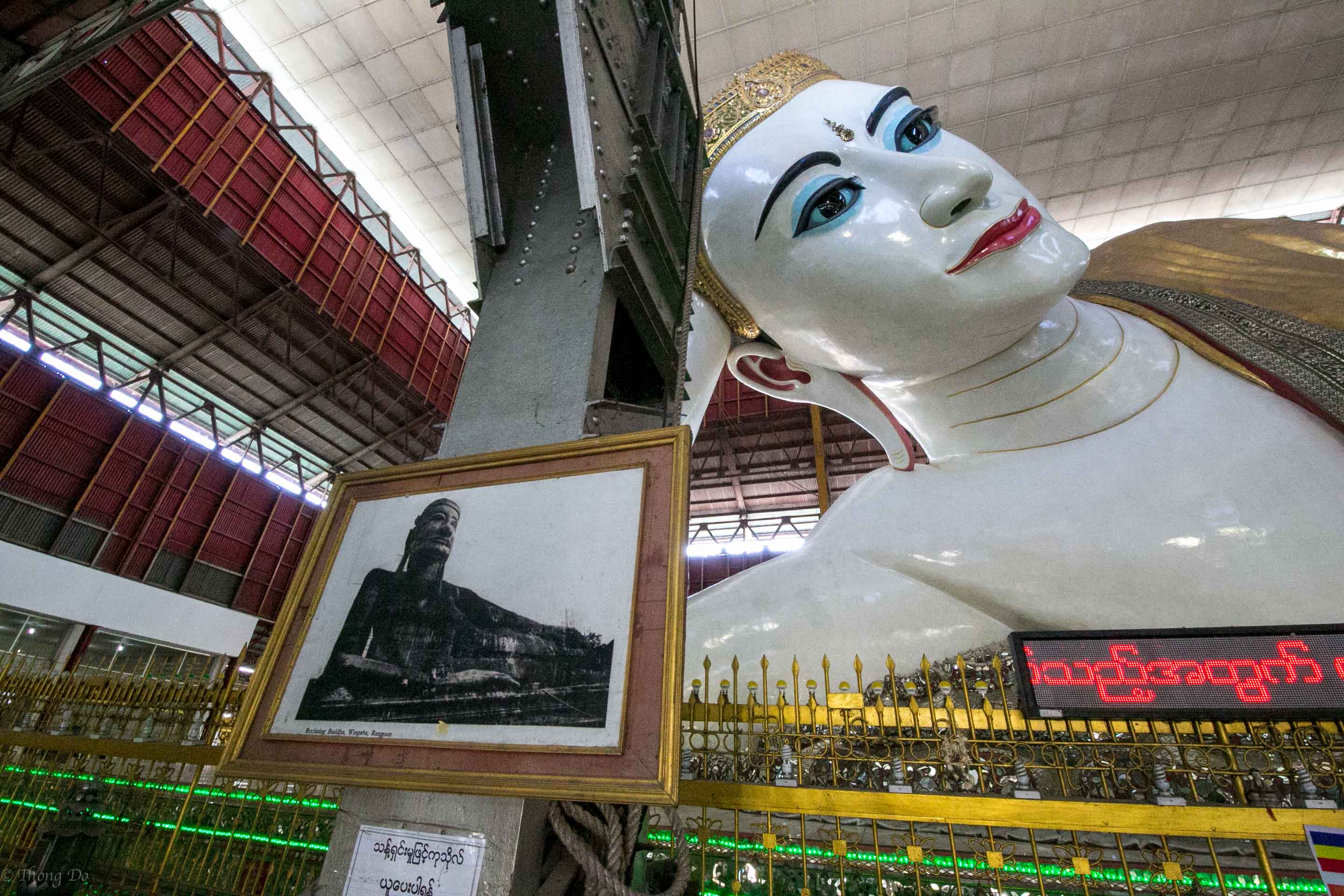
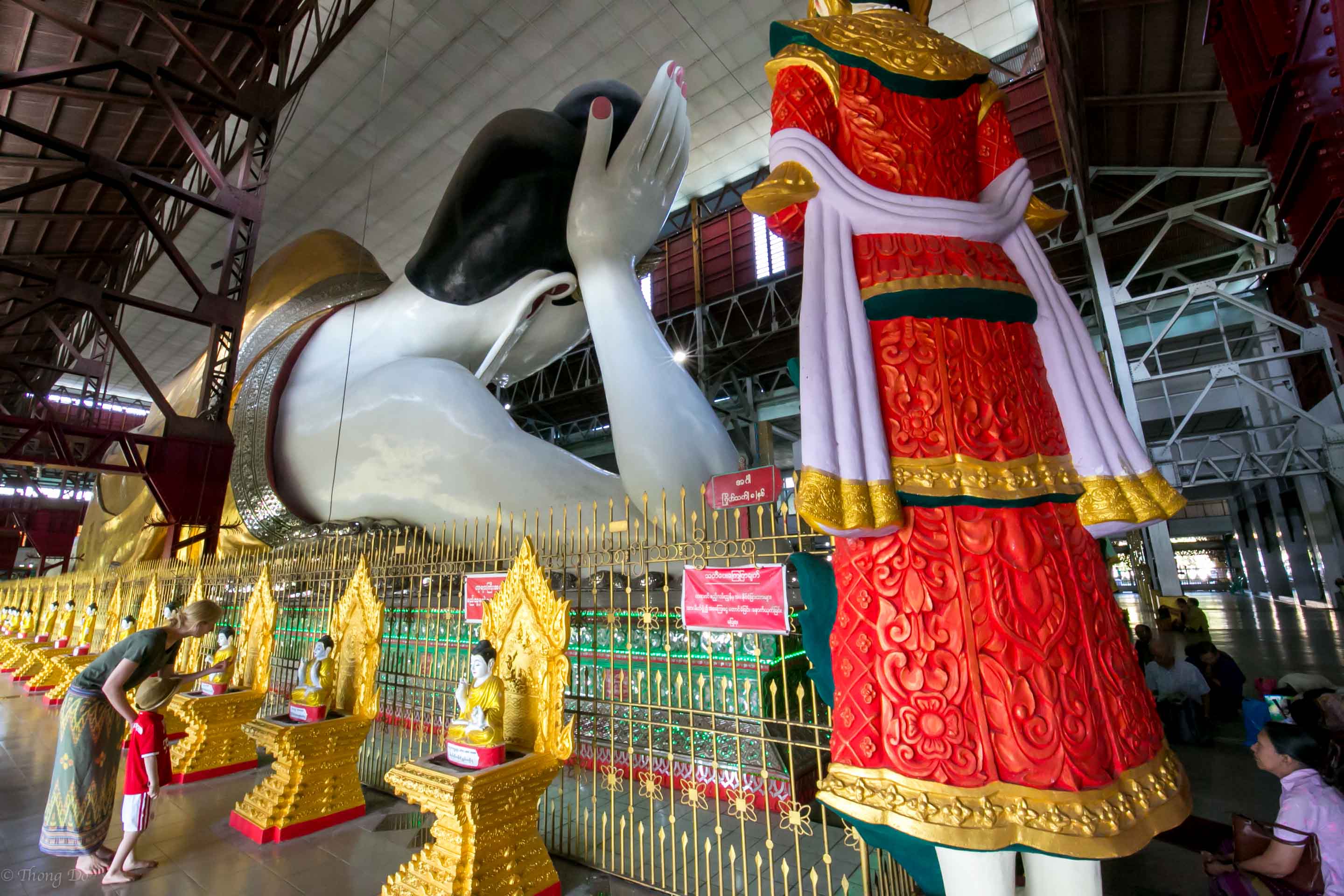

Once you enter the hangar you can’t miss it! There are plenty of opportunities to leave flowers and donations. As you walk around it you can see many paintings of the Buddhists life as well as the names of those who donated for the renovation costs. The most impressive part of the Reclining Buddha was the feet. A raised platform is provided to get a better vantage point too. There are over a 100 symbols inscribed on the feet. A small directory is placed nearby explaining what each symbol means.
The entrance fee is $5 and that is used to pay for the maintenance of the Reclining Buddha and the education costs of the nearby monastery. It is open daily from 6am-8pm. Dress appropriately and if you have a wide-angle lens, this is the place for it.
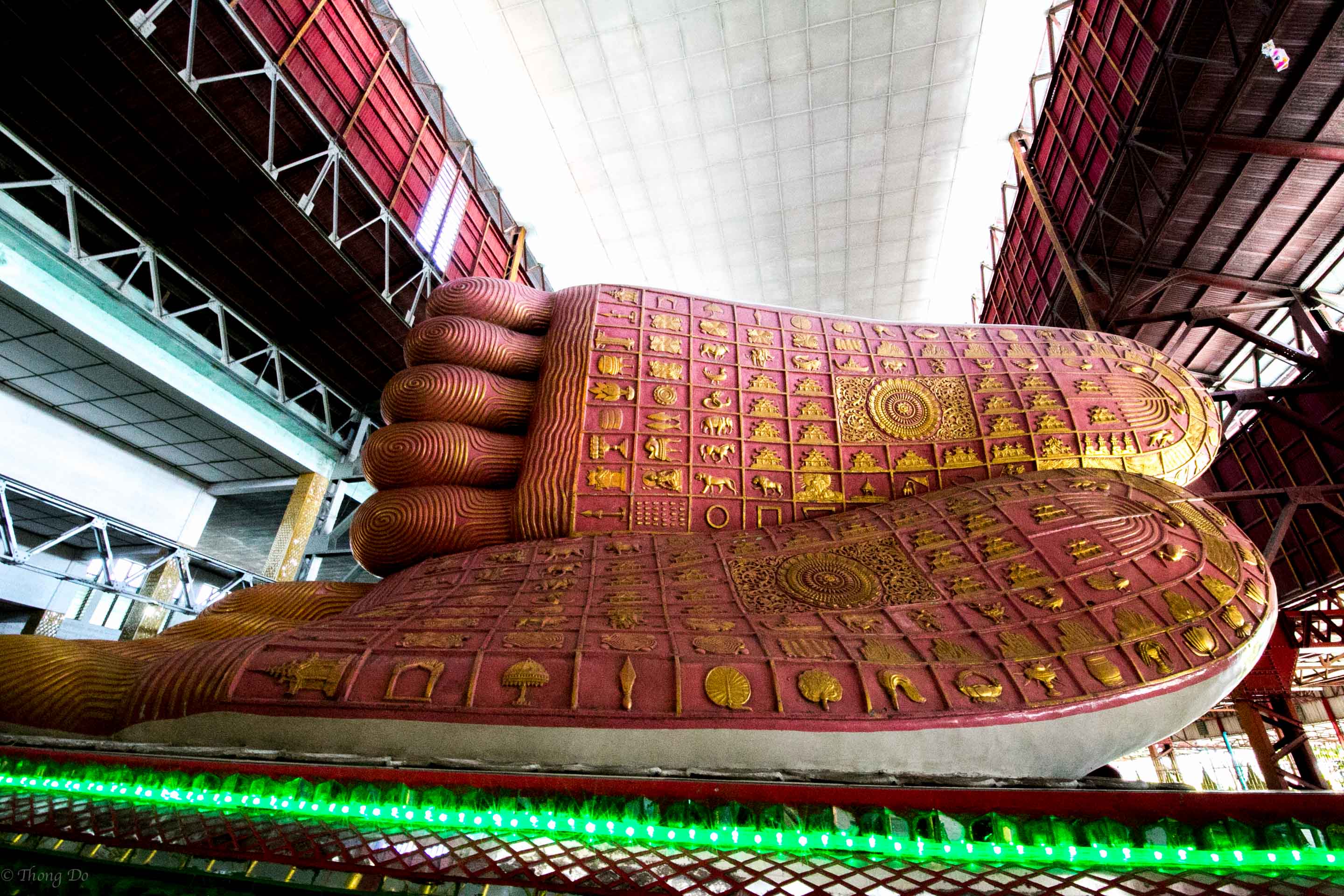
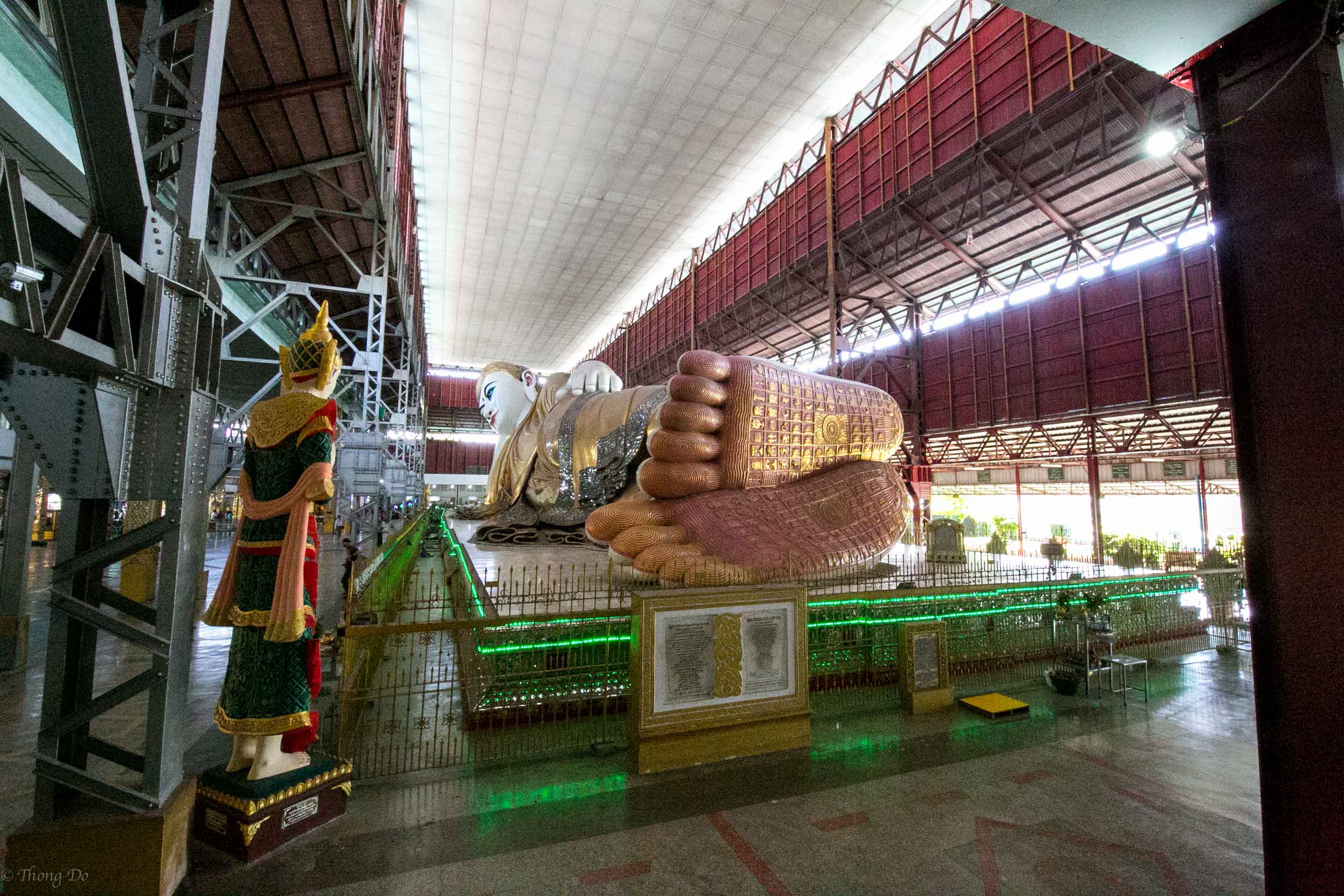
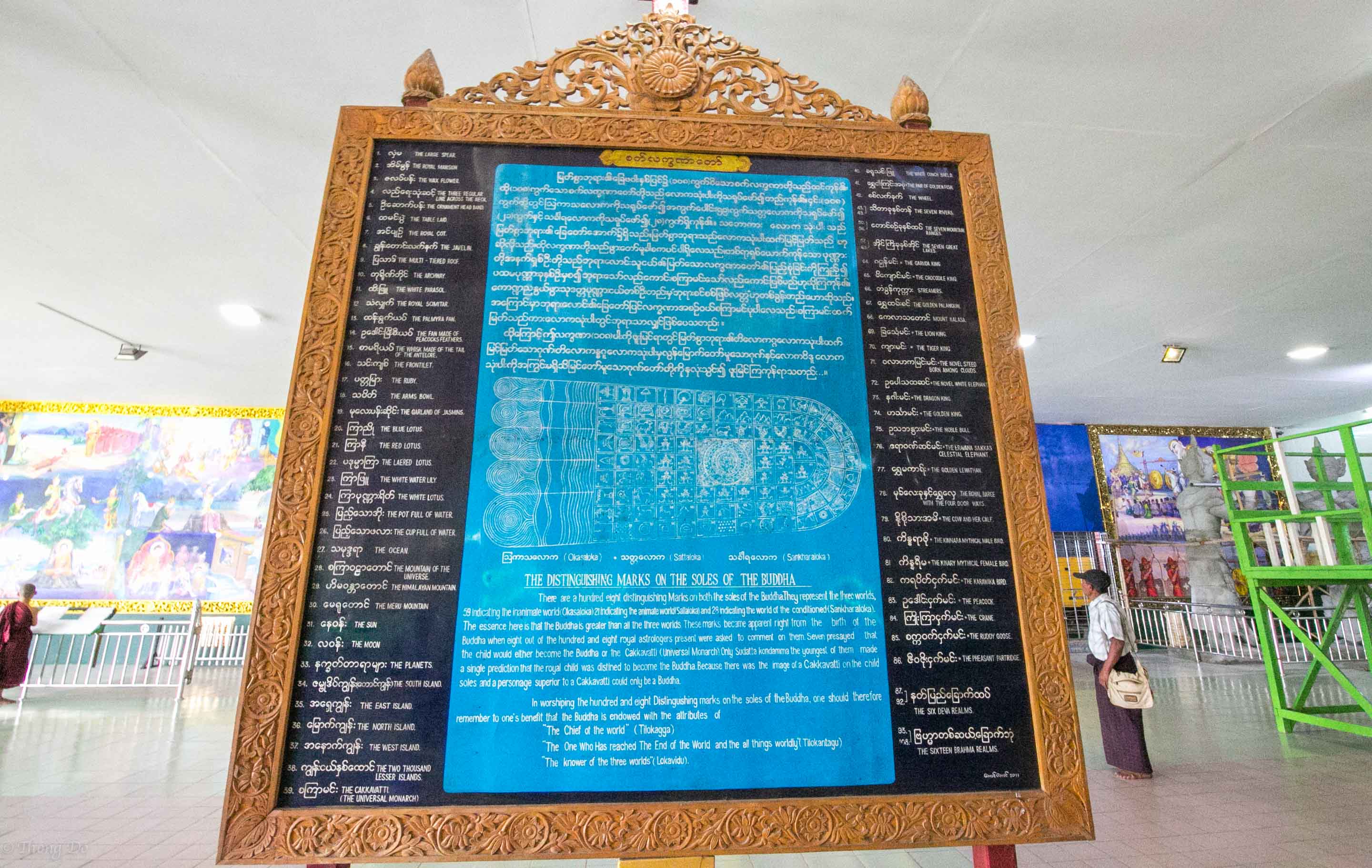
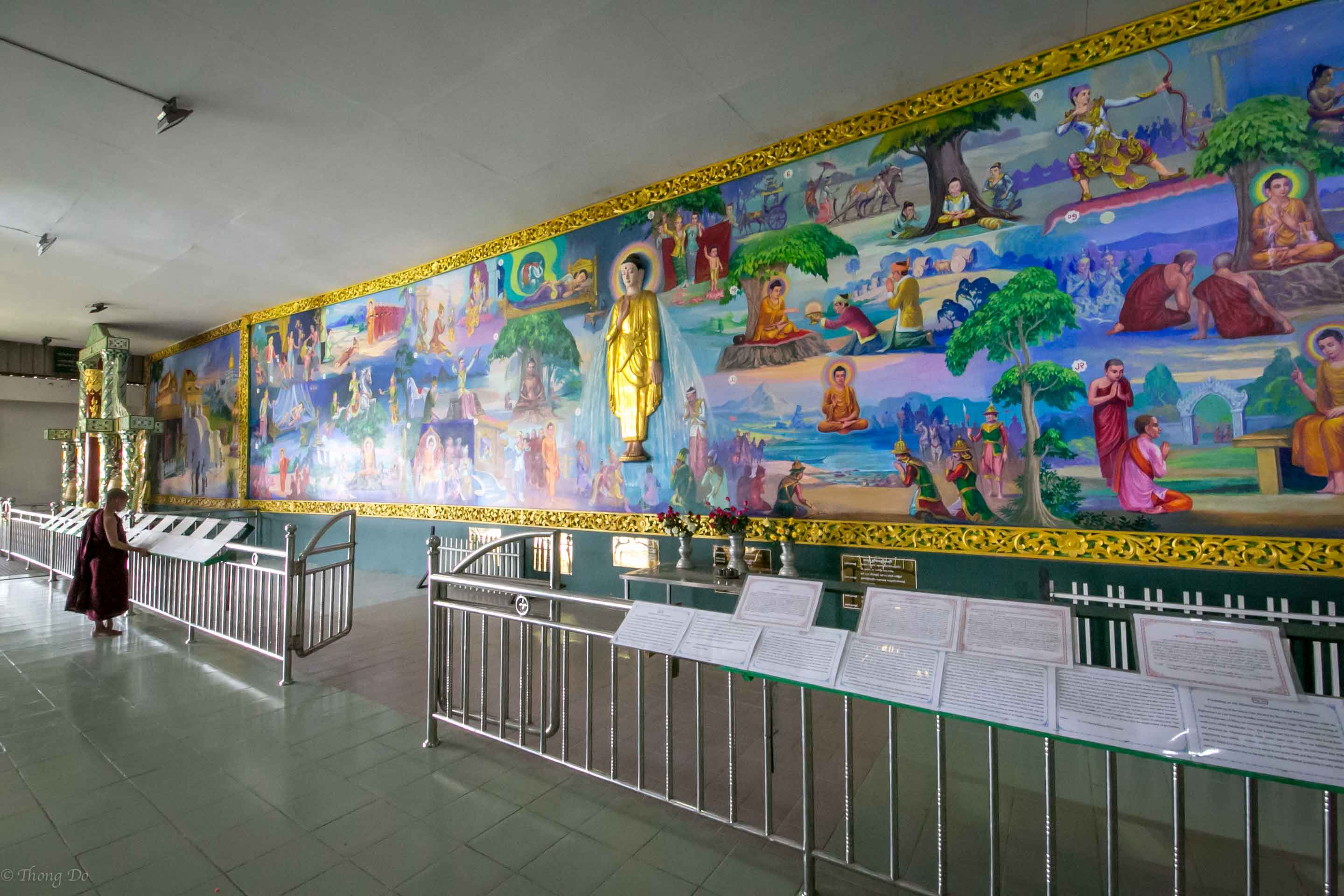
One of the more interesting sites I got to see in Yangon were the 3 royal white elephants. While my guide and I were driving around town he just asked if I’d like to see the famous white elephants. I said sure since I had never seen a white elephant before. On our way there he was telling me how interesting and beautiful they were and as soon as we arrived he mentioned that they weren’t actually white but more pinkish in color! Anyways, Southeast Asian countries love their elephants and the region’s rulers have prized albino pachyderms. They represent good luck, stability, and prosperity. These three elephants were discovered in the Rakhine forests and have a specially enclosed park for them.
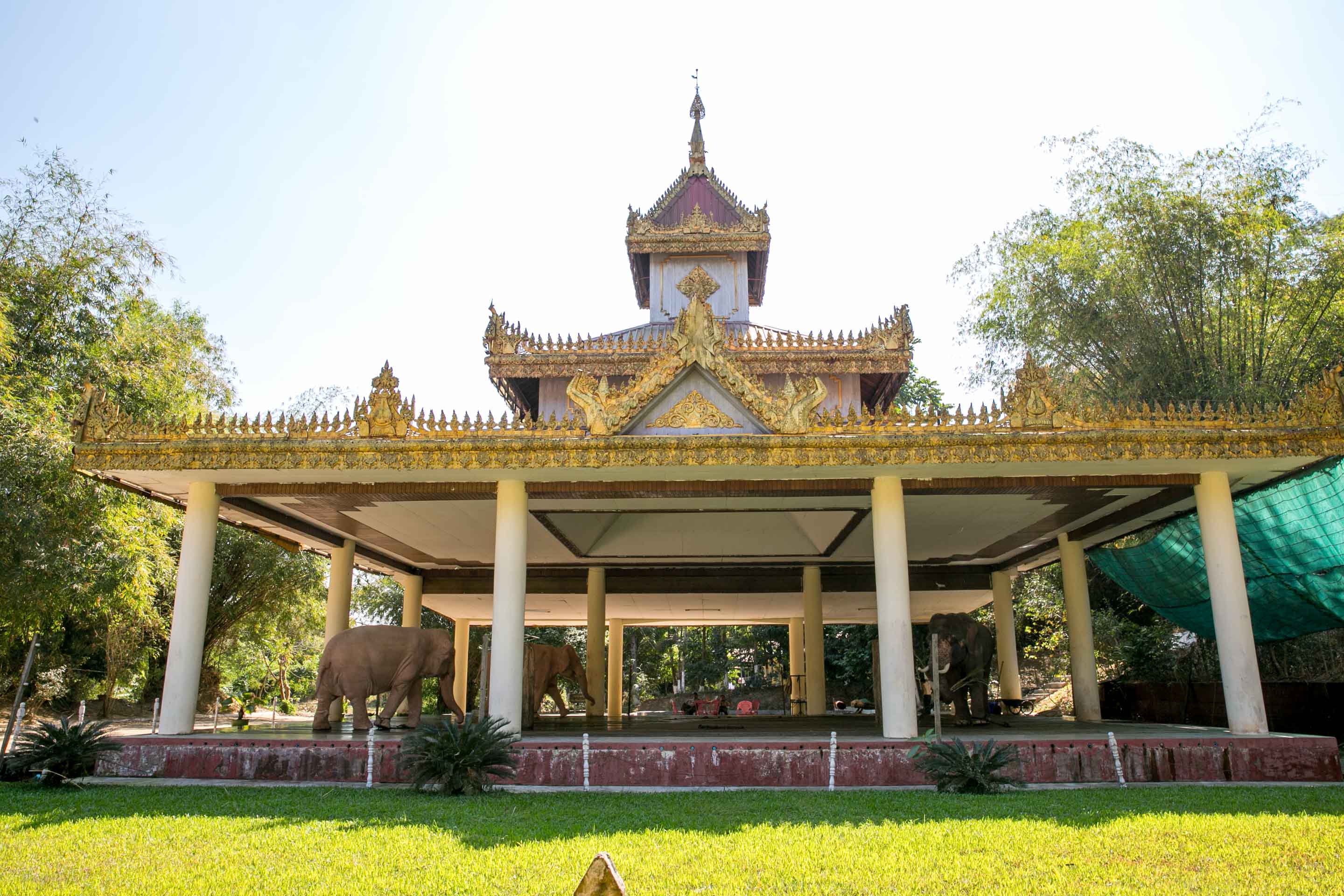
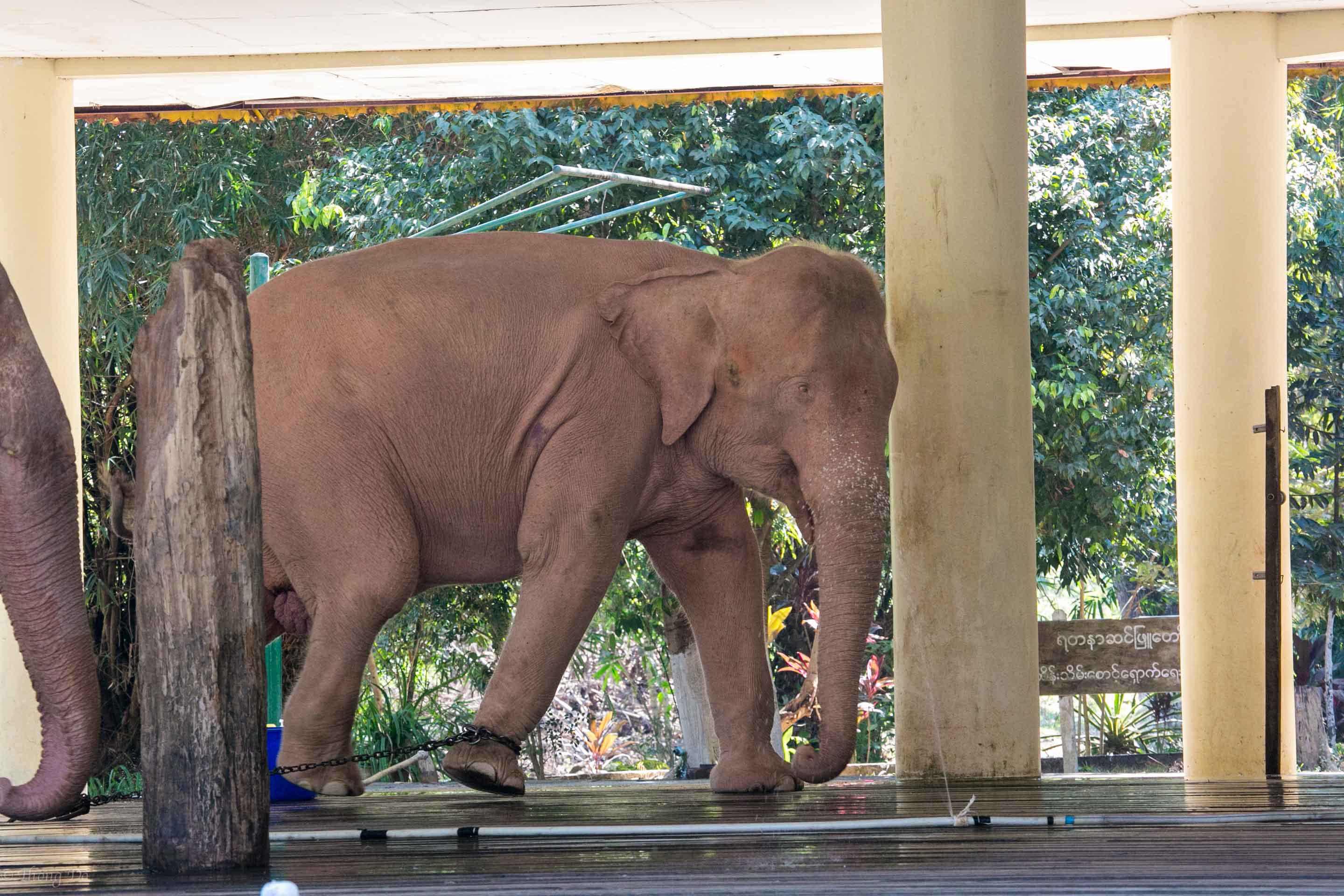
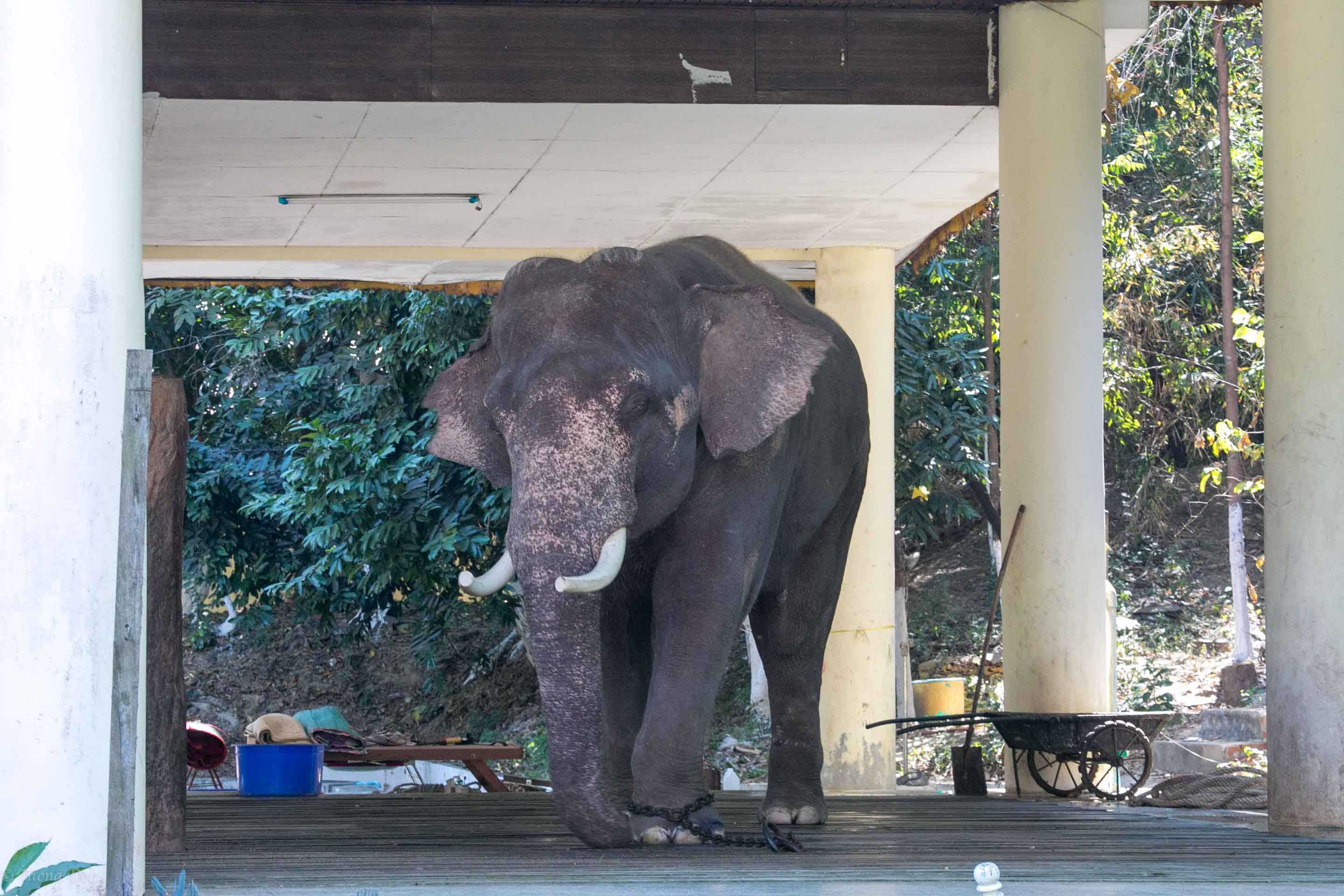
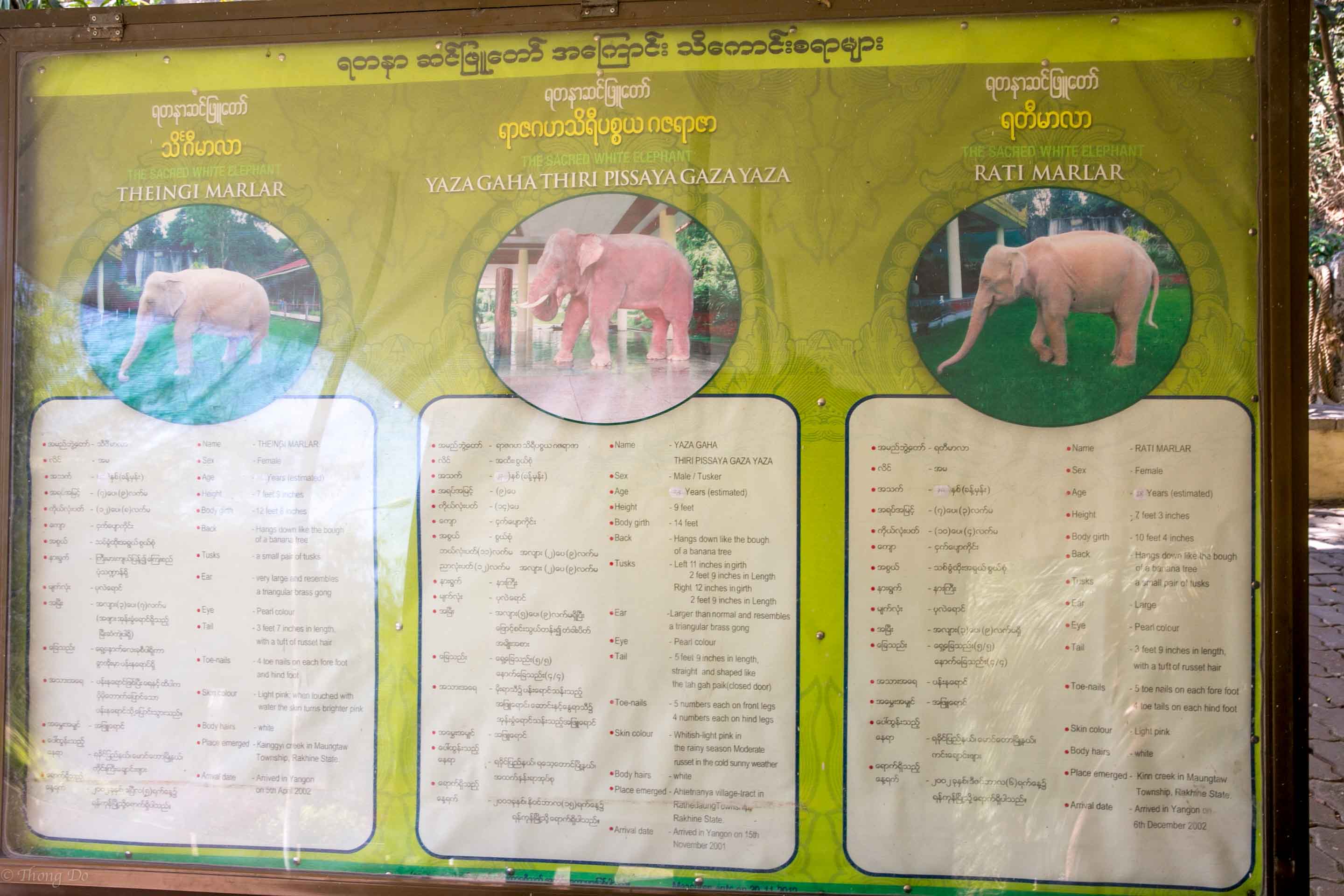
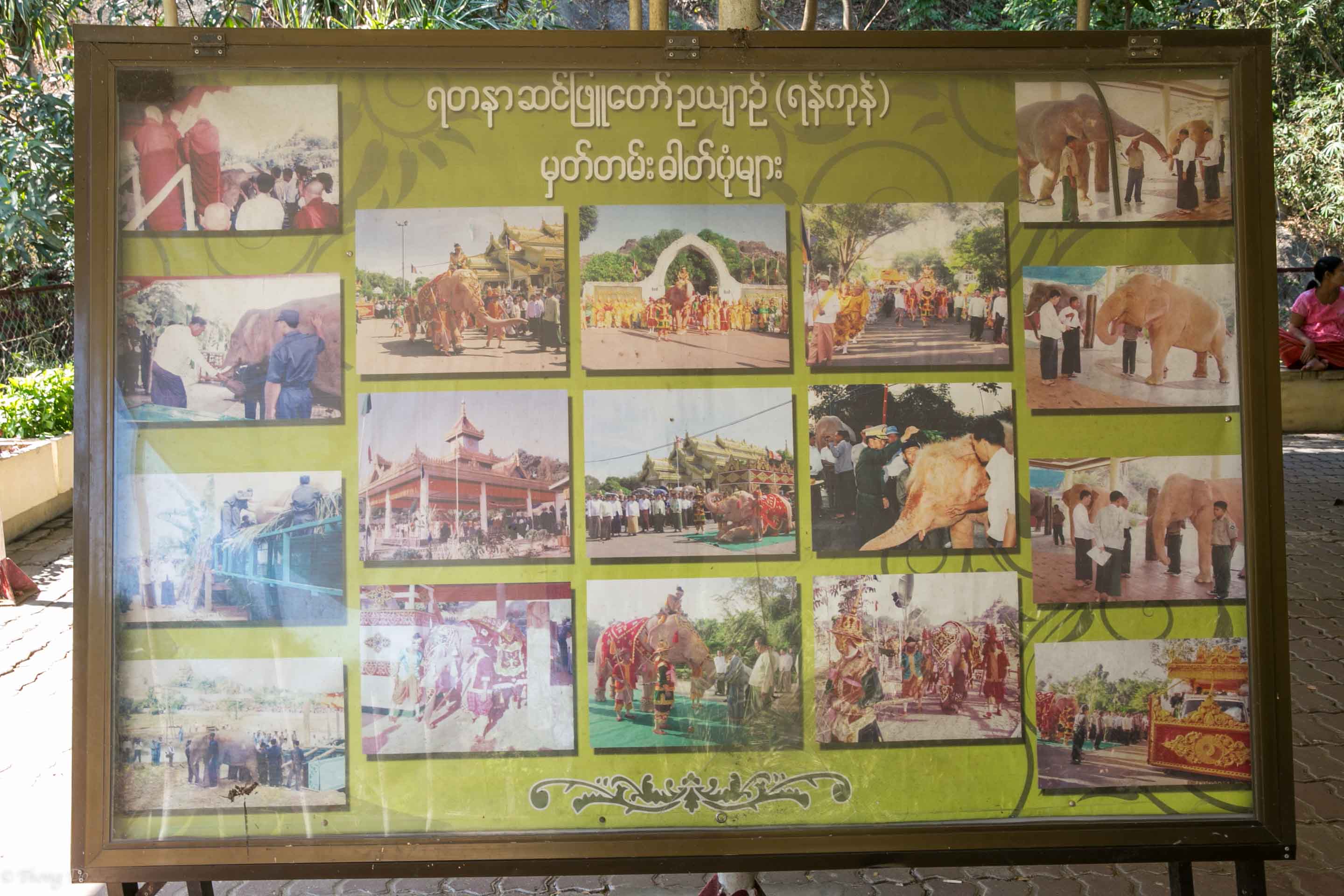
The Hsin Hpyu Daw Park is located in the northern part of Yangon and during the business hours the elephants are chained underneath a large pagoda-esque structure to keep them out of the sun. It may be difficult to see such large and majestic animals chained to the ground with very little walking room but it’s just during operating hours and they are given free range afterwards. The price of admission was free and is open during regular business hours daily. There are information boards that give specific information about the three elephants too.
A nice quiet place to relax and get away from the busy life of Yangon is the Kandawgyi Lake. Manmade and not very from the Shwedagon Pagoda it’s a great place to enjoy the scenery and take things down a notch. Kandawagyi translates to “royal lake” and there are many places to stroll and sit. If you are traveling with children stop by the nearby Kandawgyi Nature Park for a picnic or to see the small zoo.
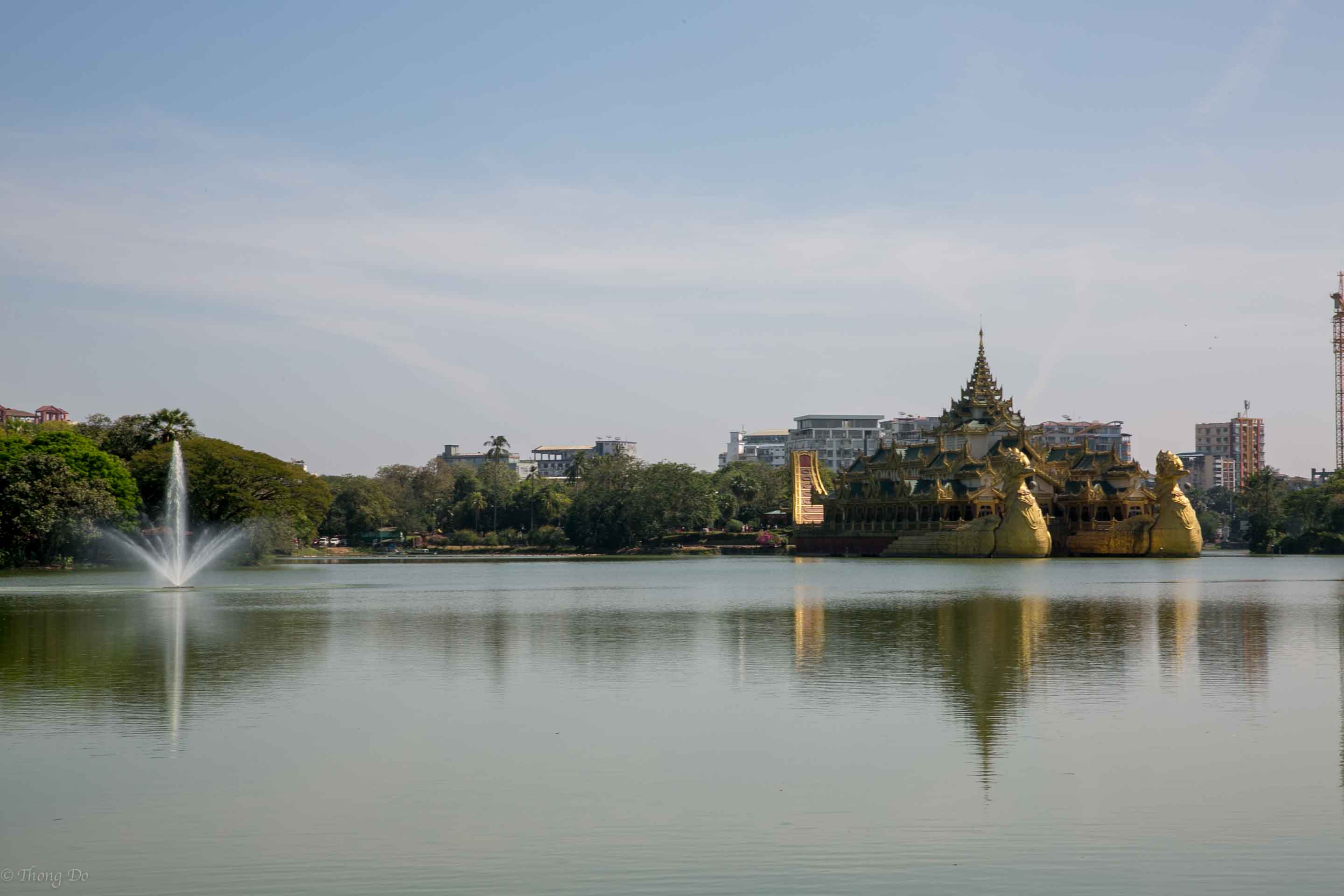
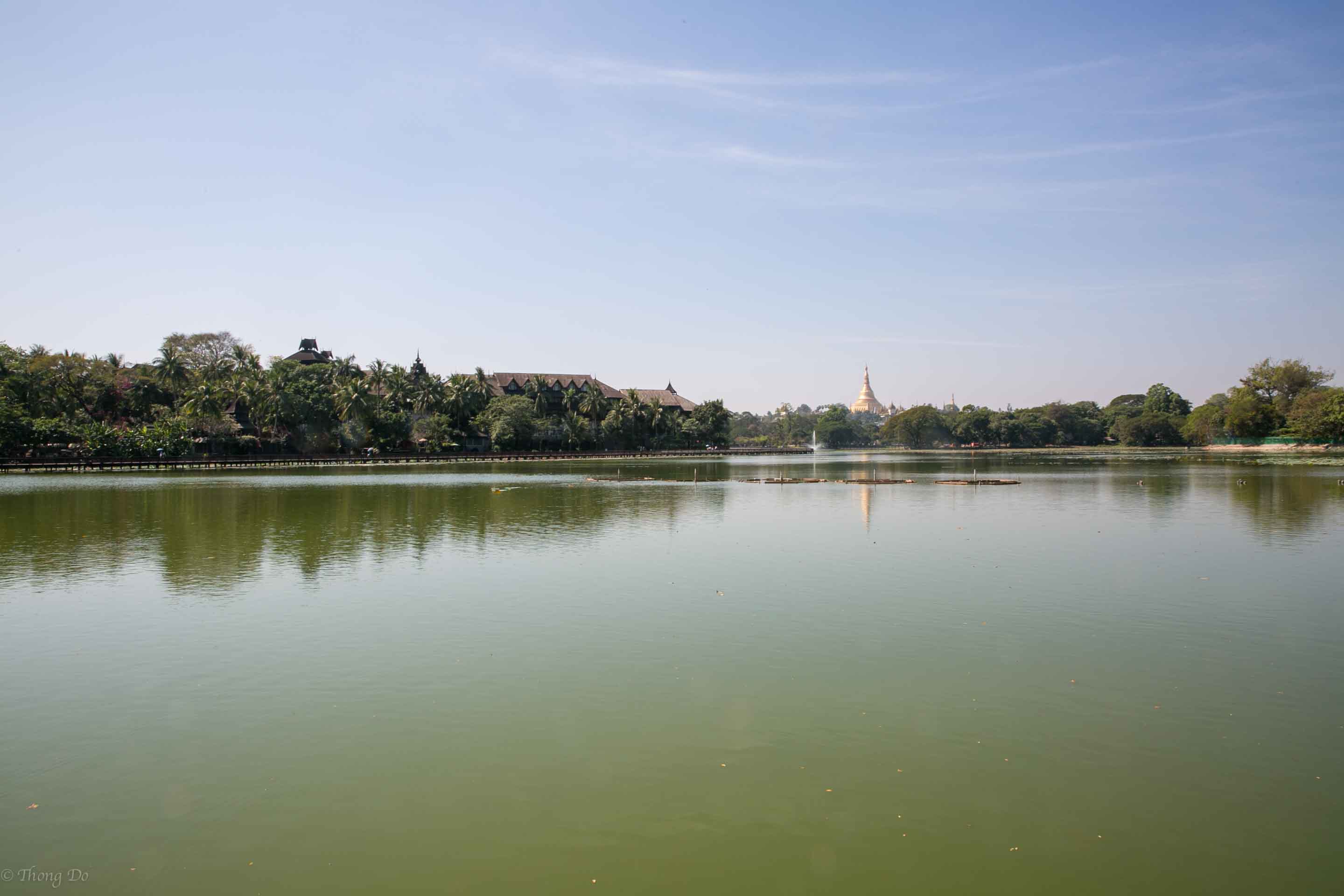
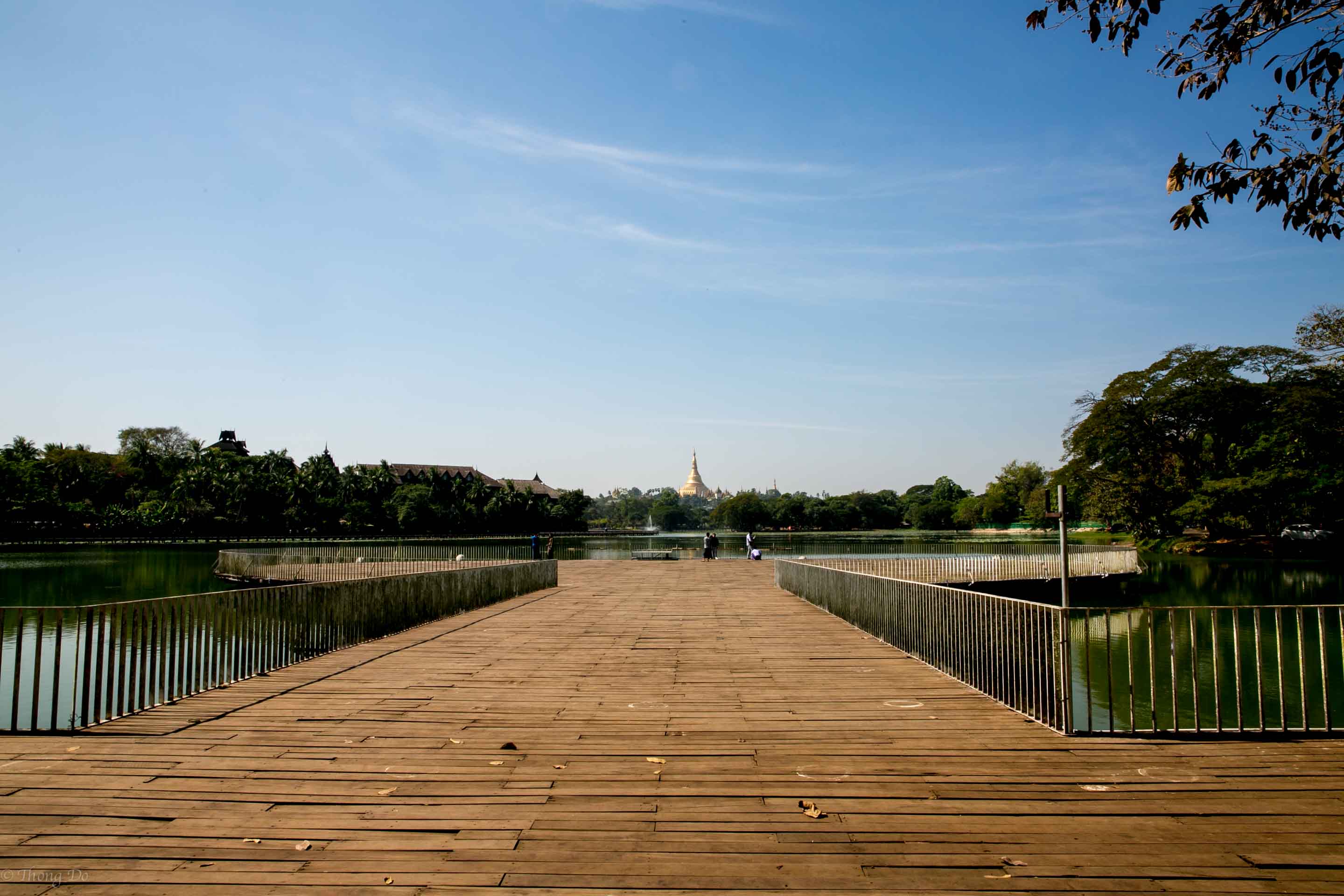
You can’t miss the Karaweik Palace once you’re there. A mythically shaped barge that was built in the 70s it was designed to house the country’s royalty. I only saw it from a distance and didn’t have time to go inside. The Nature Park is open 6am-10pm daily and the Karaweik Palace is open noon-10m daily.
The other main attraction I really enjoyed was the Kaba Aye Pagoda located just northeast of Inya Lake. Translated as World Peace Pagoda, it was built in 1952 by the first Prime Minister of independent Burma in preparation for the 6th Buddhist Synod. The pagoda stands at 34 meters and the attention to detail is outstanding inside.
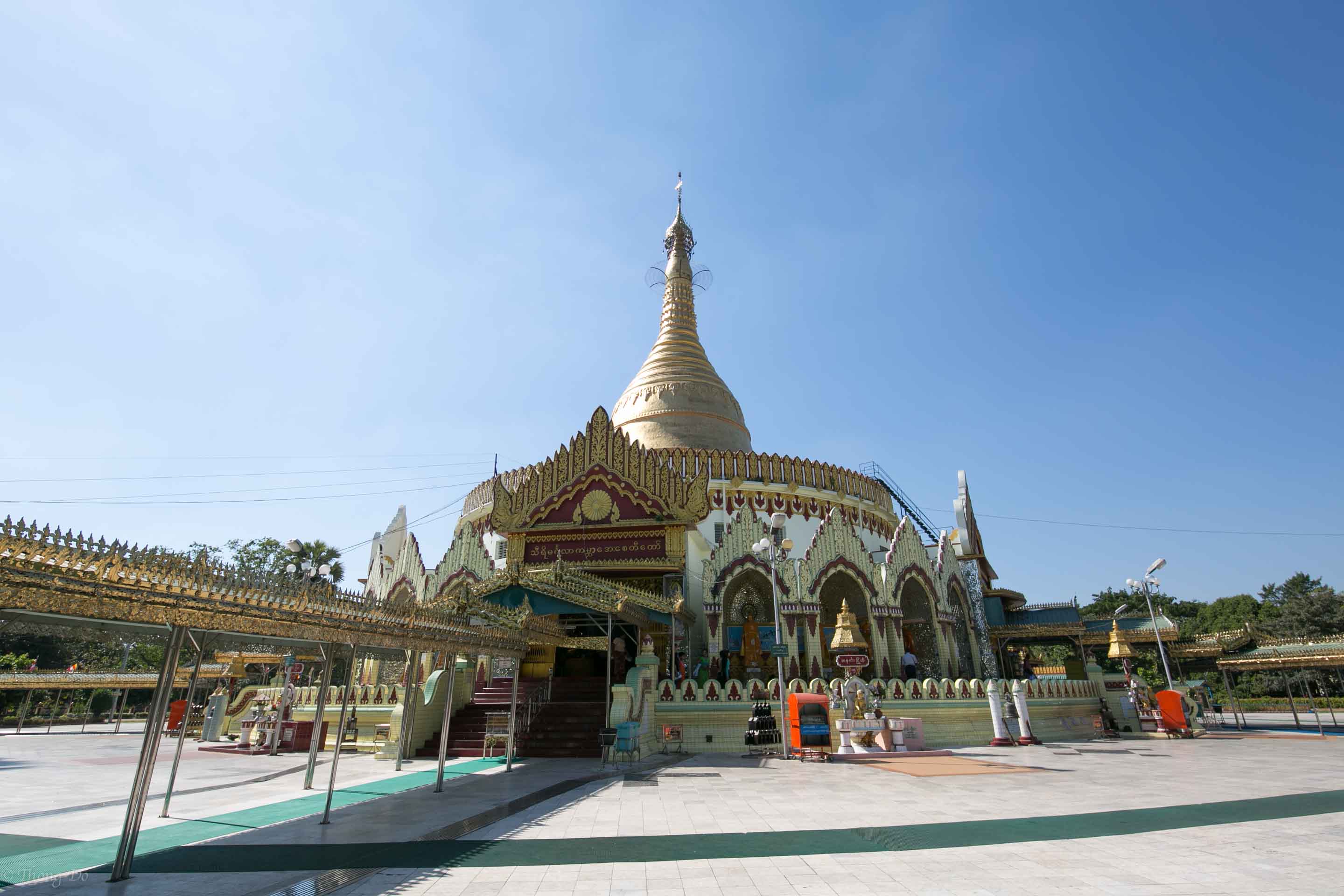
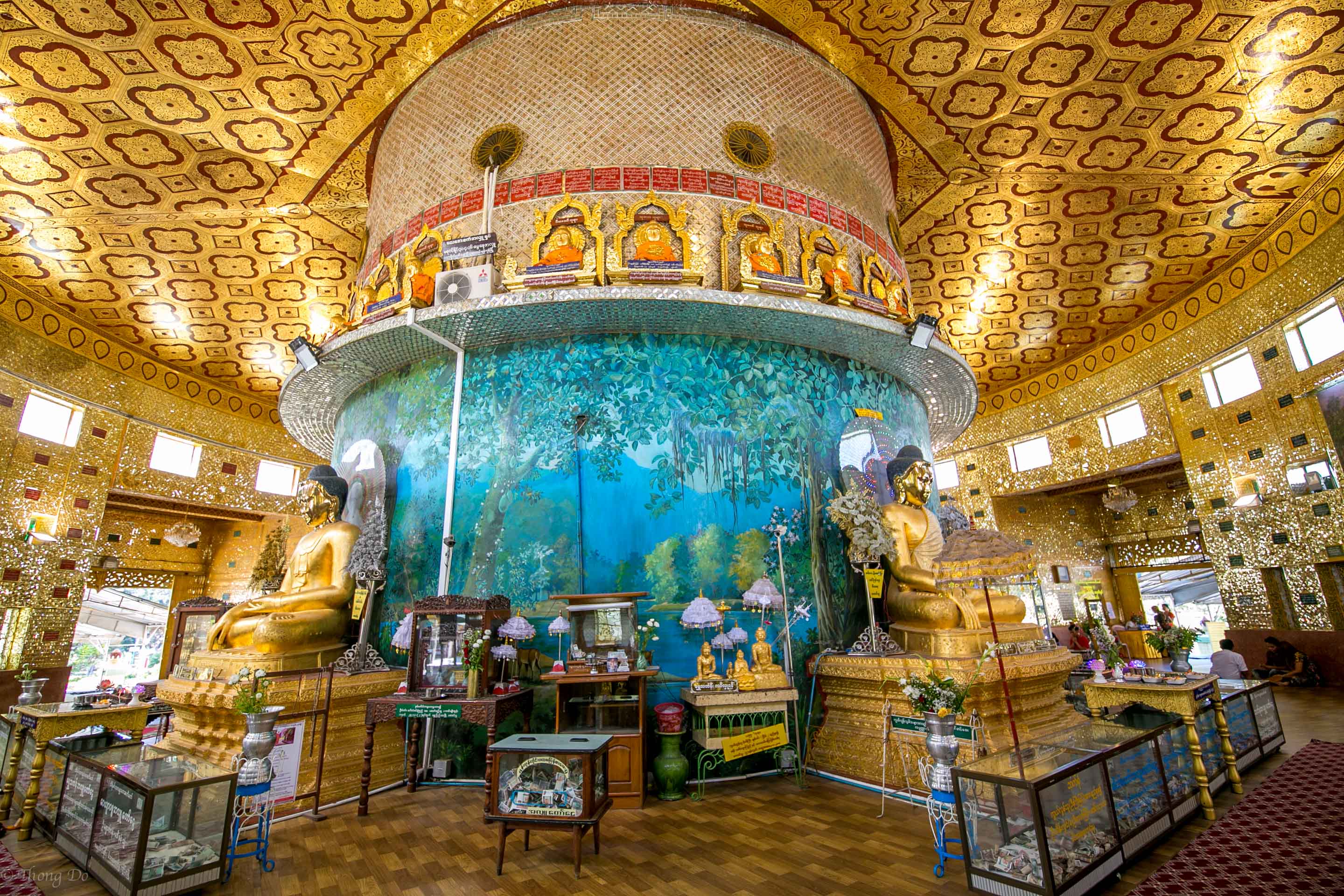
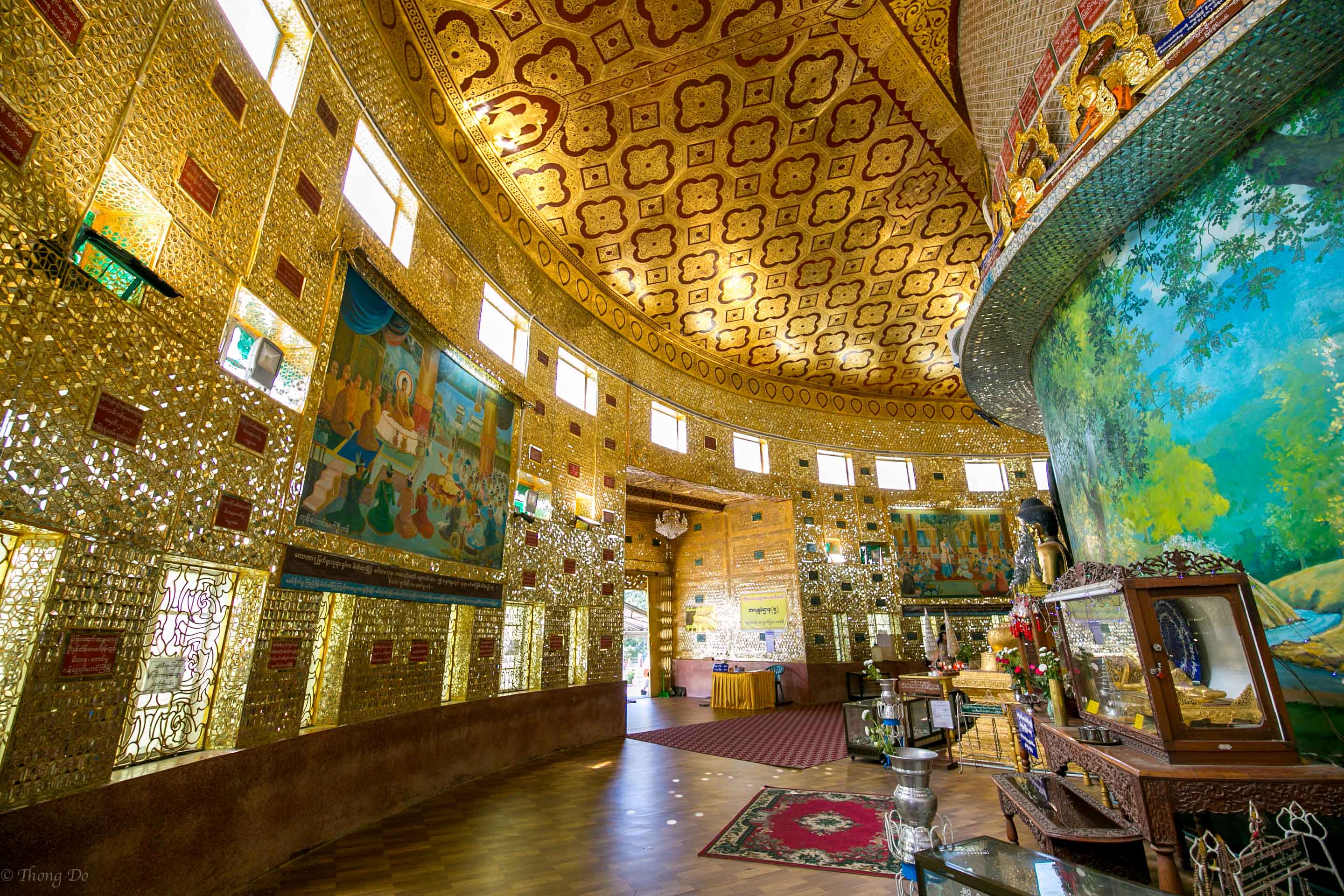
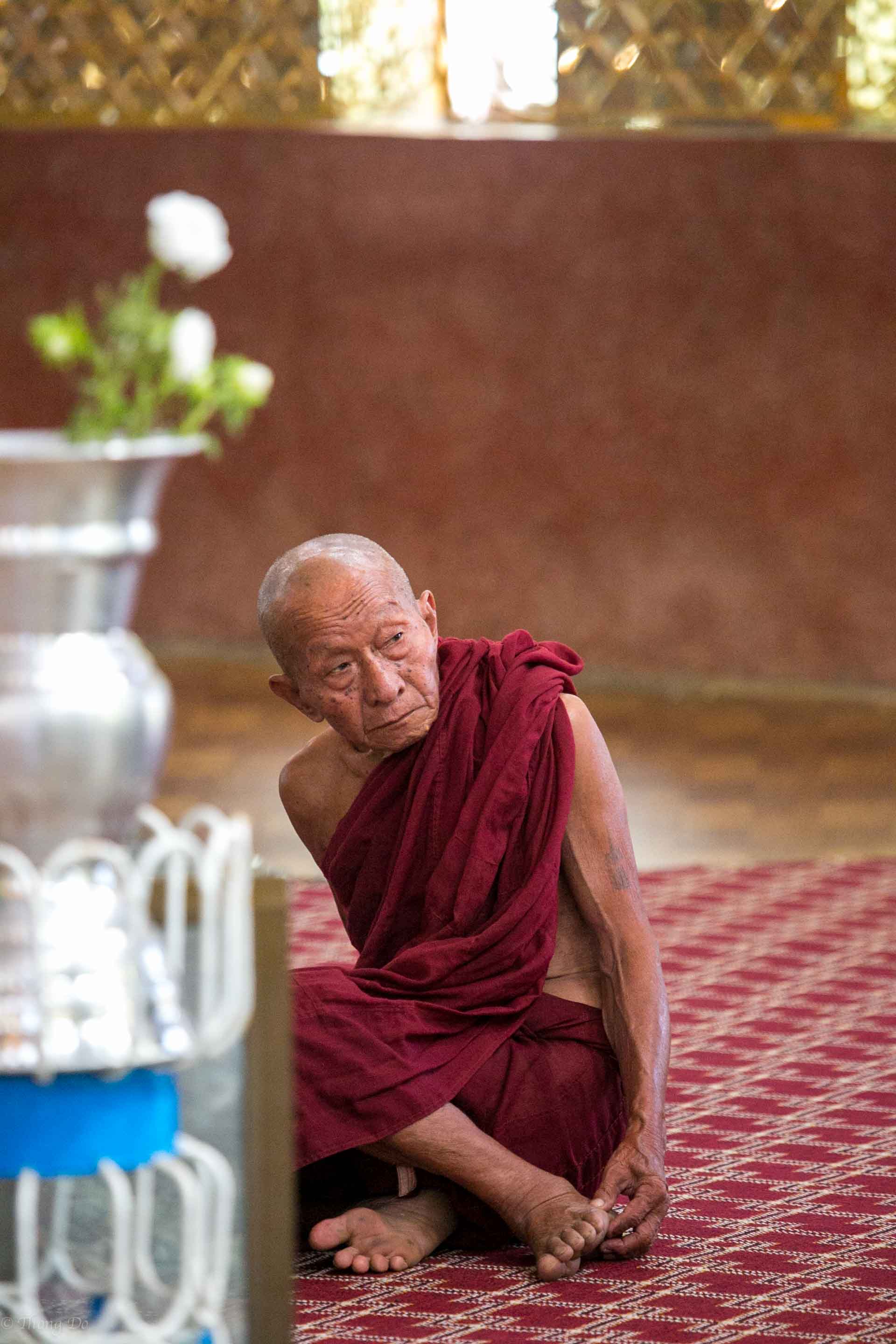
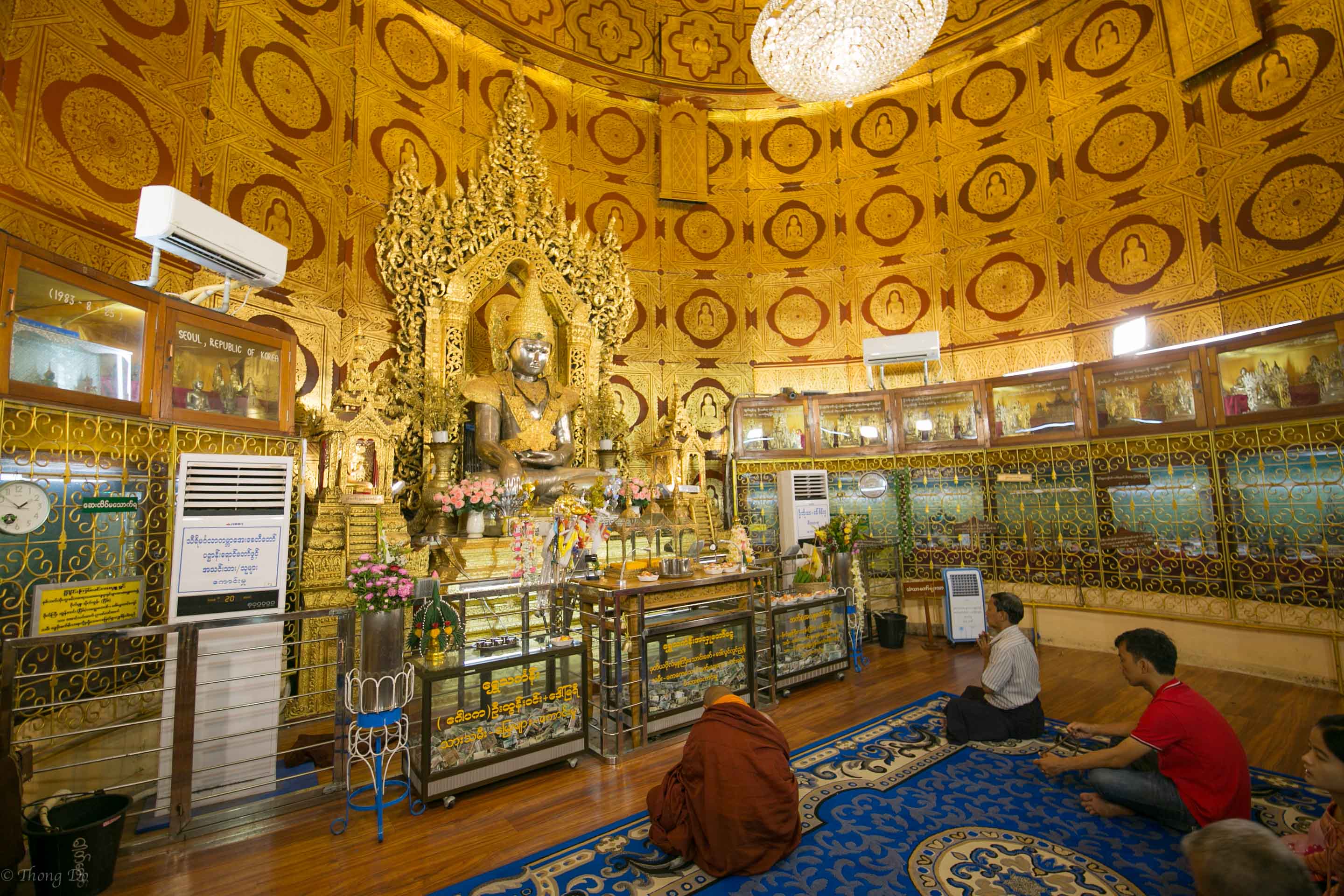
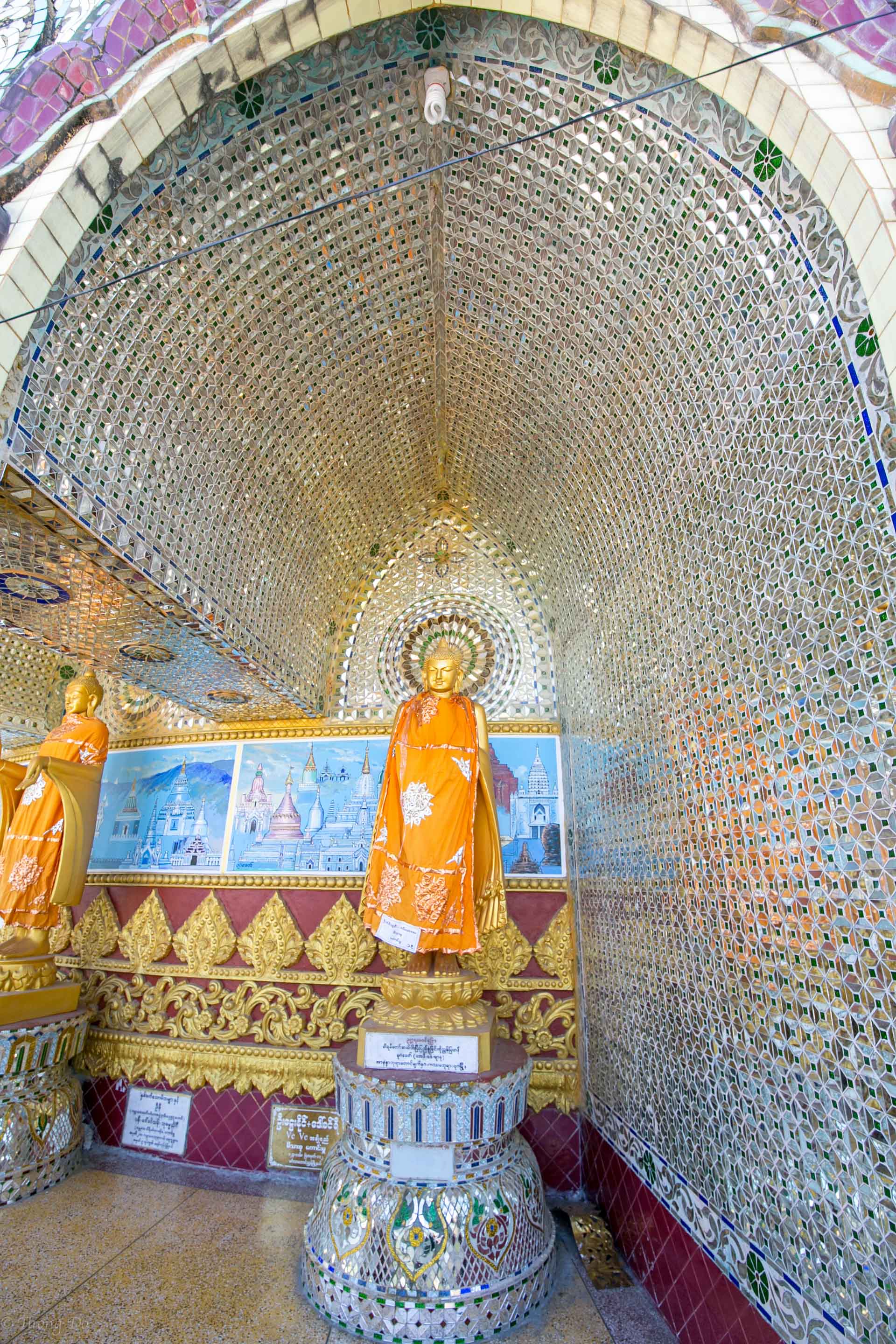
The Kaba Aye Pagoda is open daily from 6am-8pm and the entrance fee is $5. If you wish to take photos they will charge a very small fee too. What I liked about this place was circular platform surrounding the main pagoda and the amount of opulence that went into it. The atmosphere is quiet as there are were numerous monks in deep meditation and many worshippers praying when I was there. There are 4 main Buddha statues inside that commemorate the 4 Buddhas who have already appeared to the world. No one knows when the 5th will arrive. The main attraction inside is a room holding Buddha relics including a really big Buddha about 2.5 meters tall made of silver. If you have a wide angle lens, this is the place to use it.
During the construction of the Kaba Aye Pagoda the Maha Pasana Cave was also built. That translates as “cave of great stone”. It is located slightly north of the premises and is a replica of the Satta Panni Cave in India where the 1st Buddhist Synod was convened. The cave is 139 meters long and 110 meters wide and is now used for various meetings and to host examinations on the Tripitaka, the teachings of Buddha.
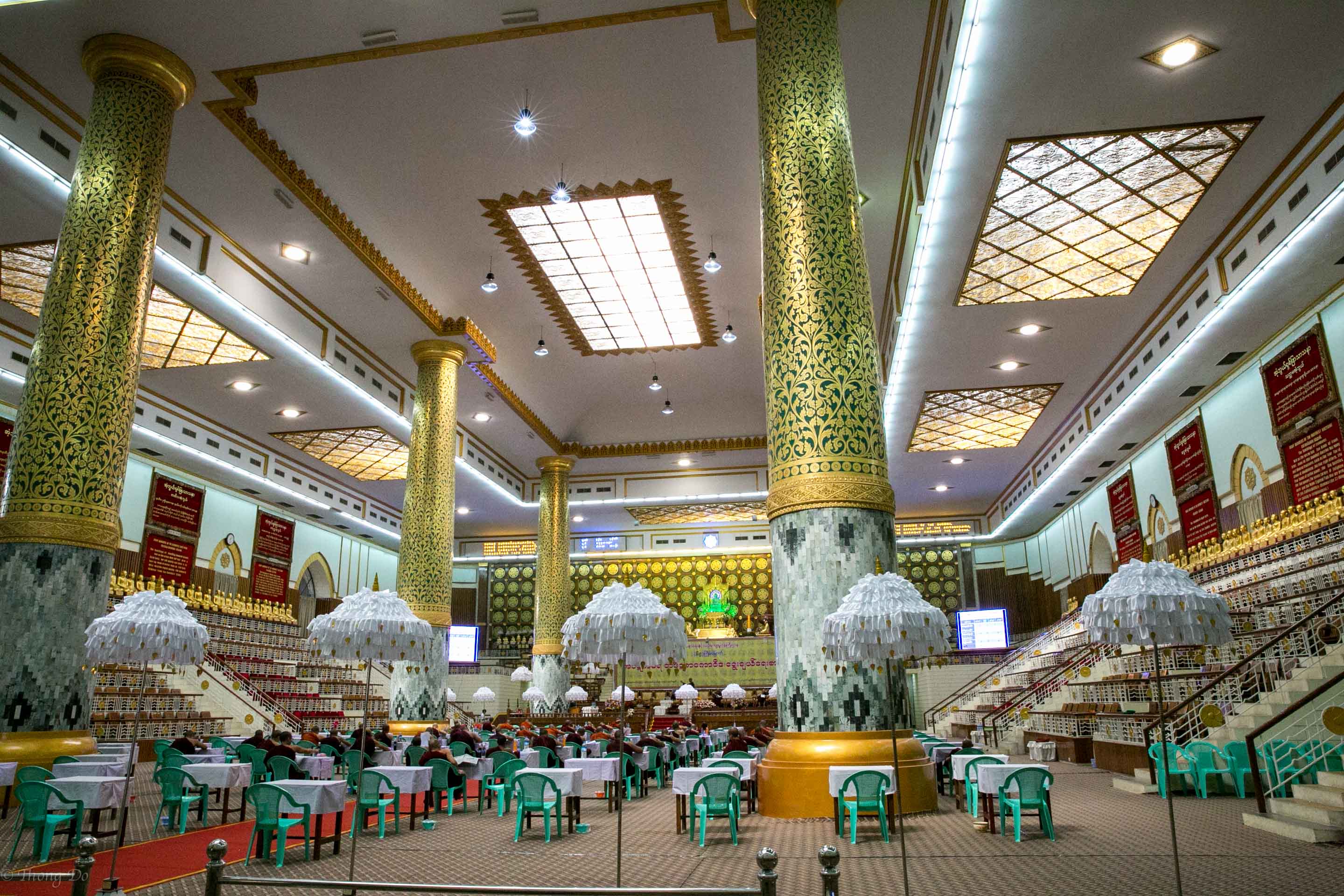
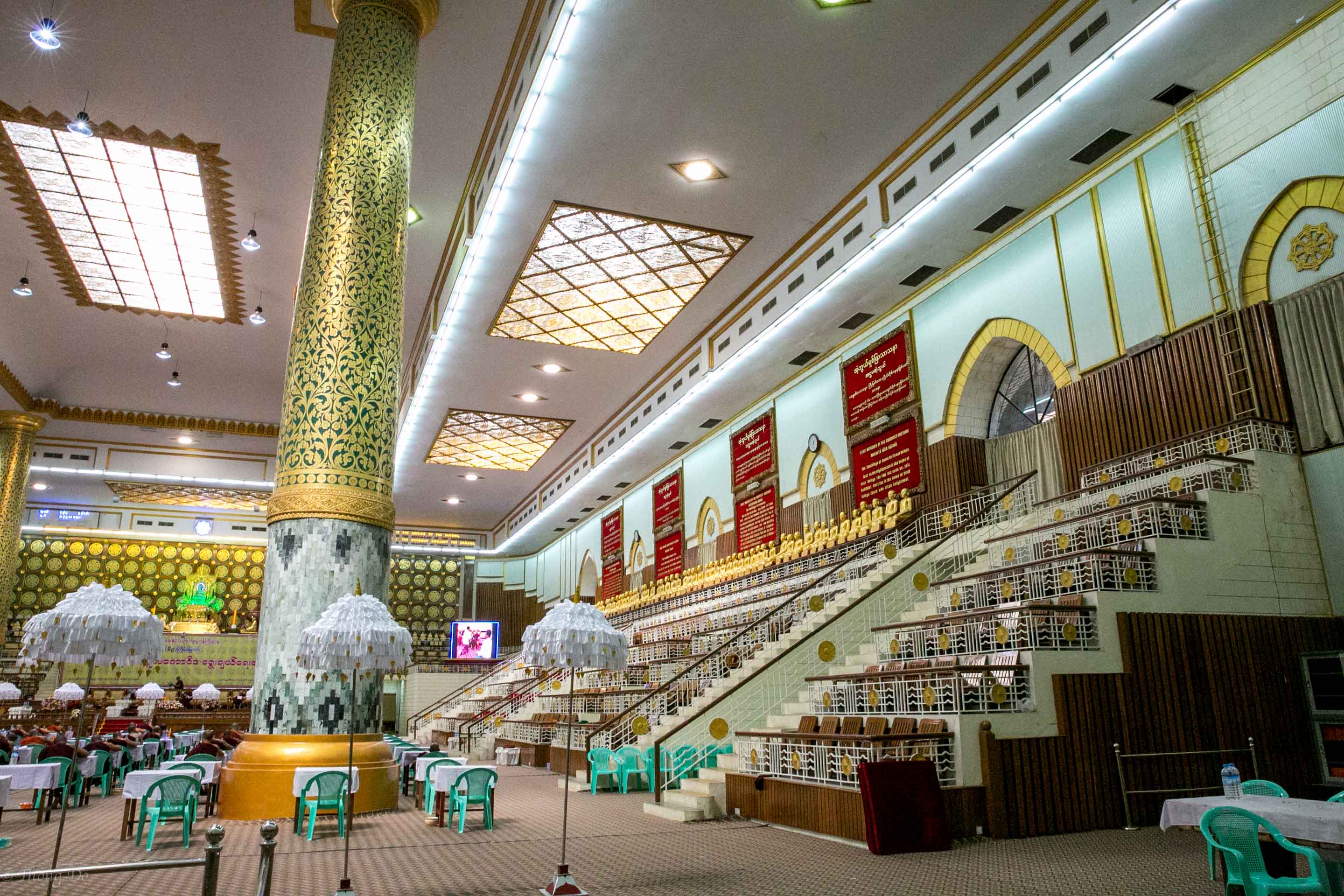
Of course there’s plenty more to see in Yangon but these were my highlights and I hope this as well as my photos encourage you to visit this amazing capital of Southeast Asia.
Happy traveling.
